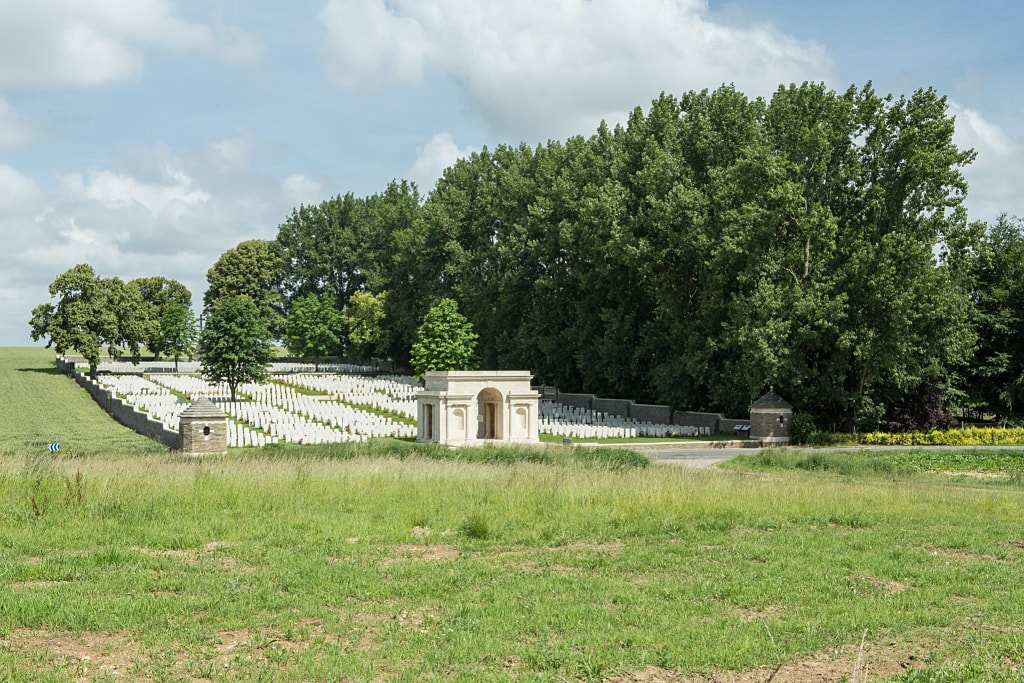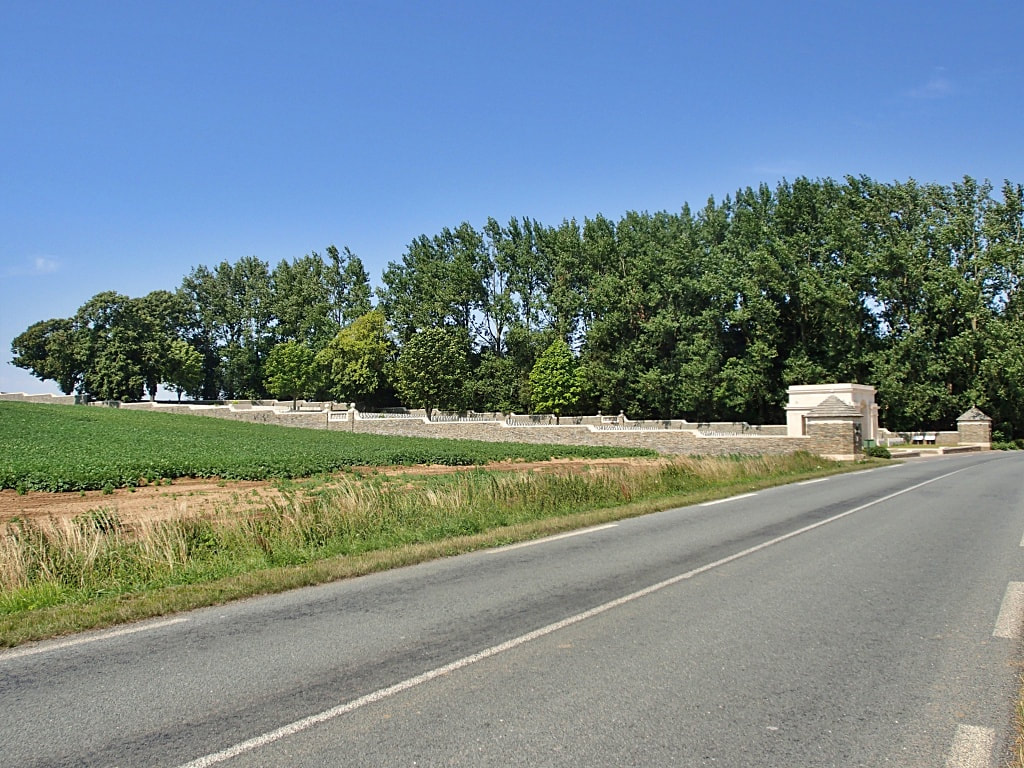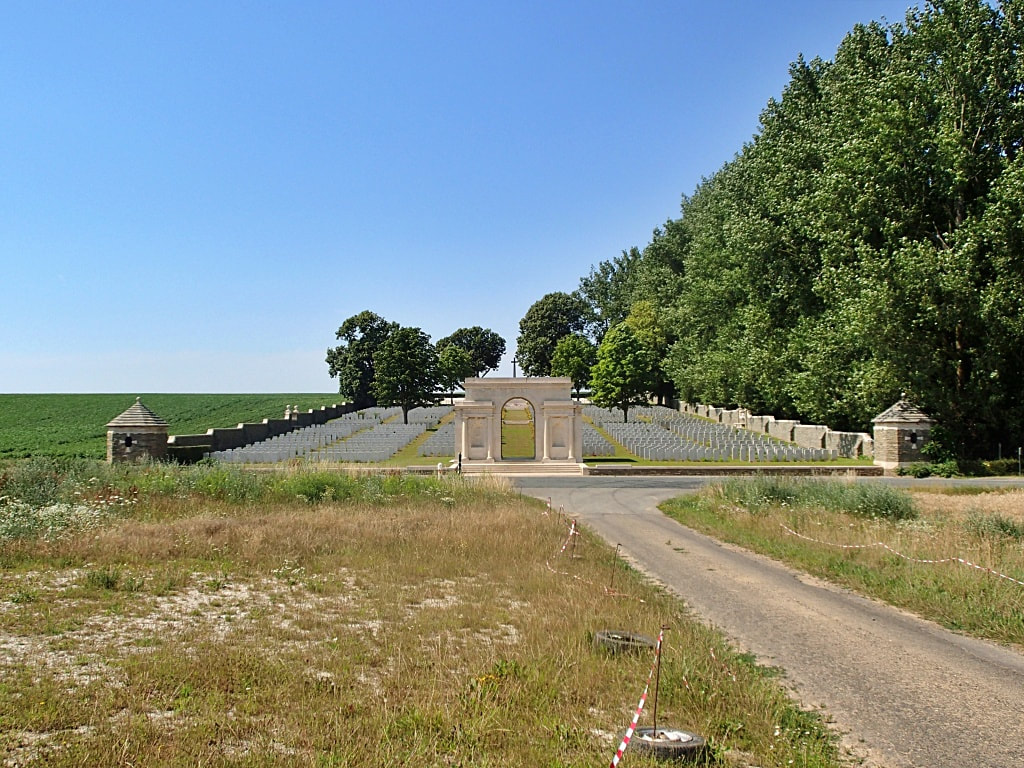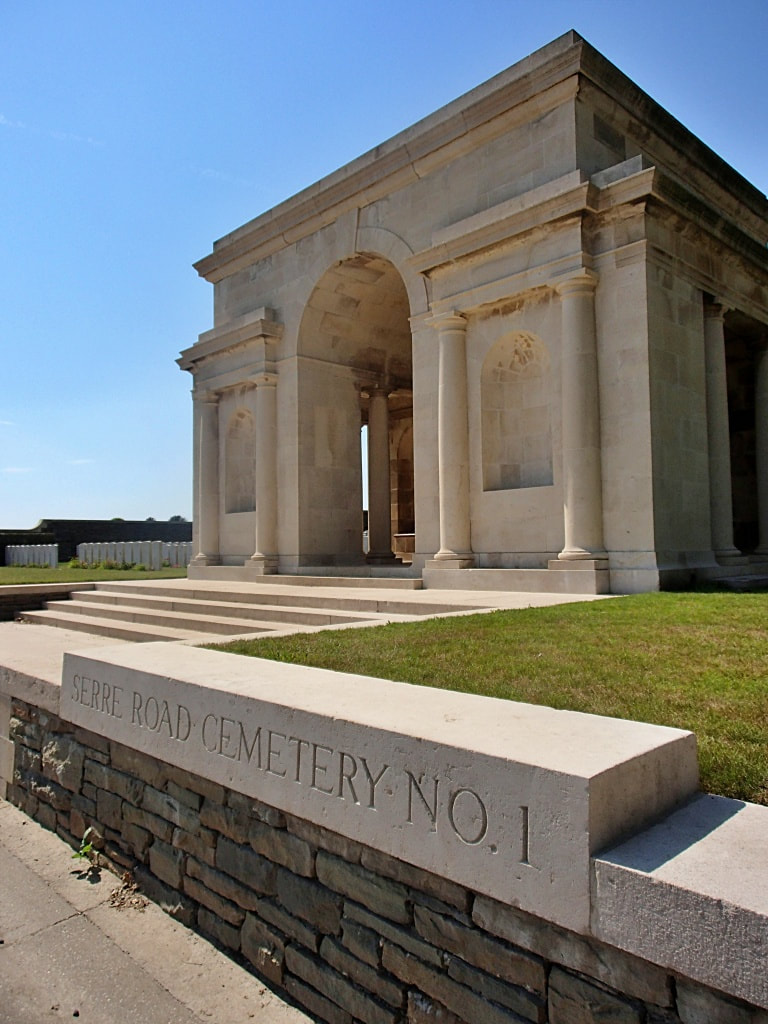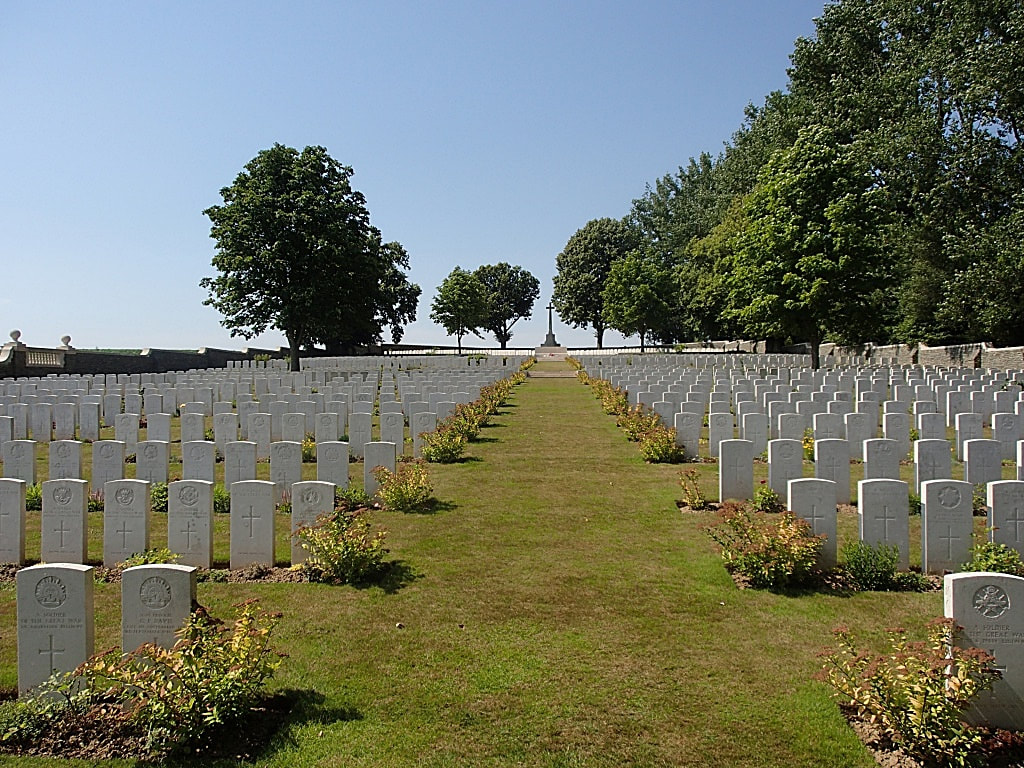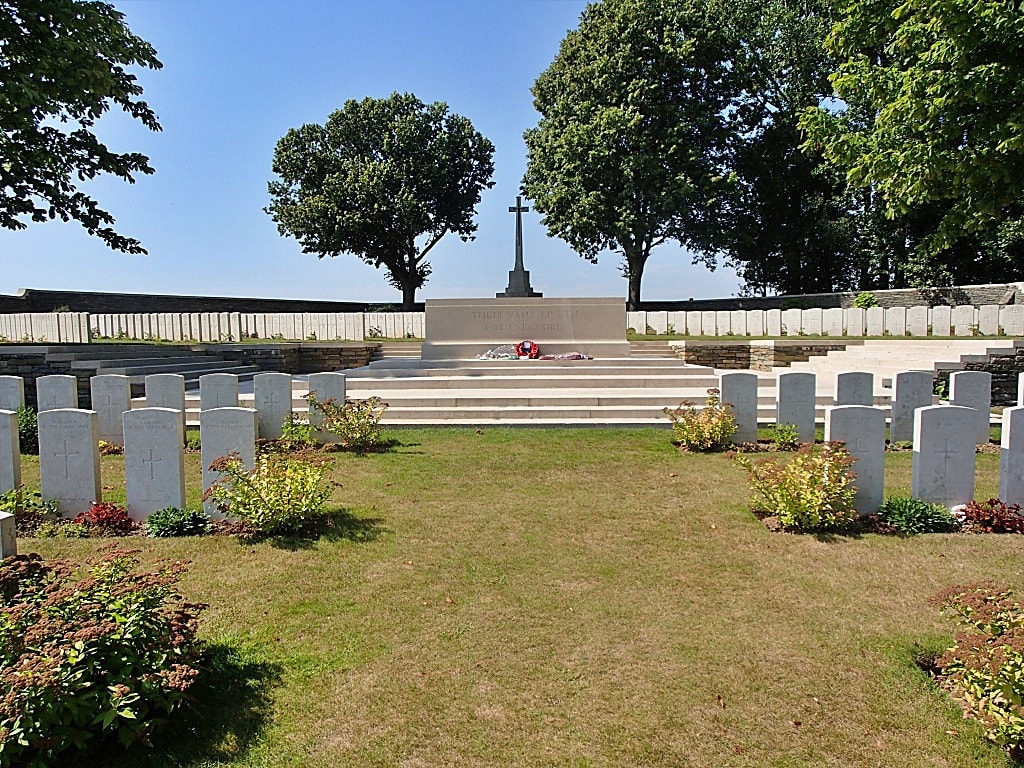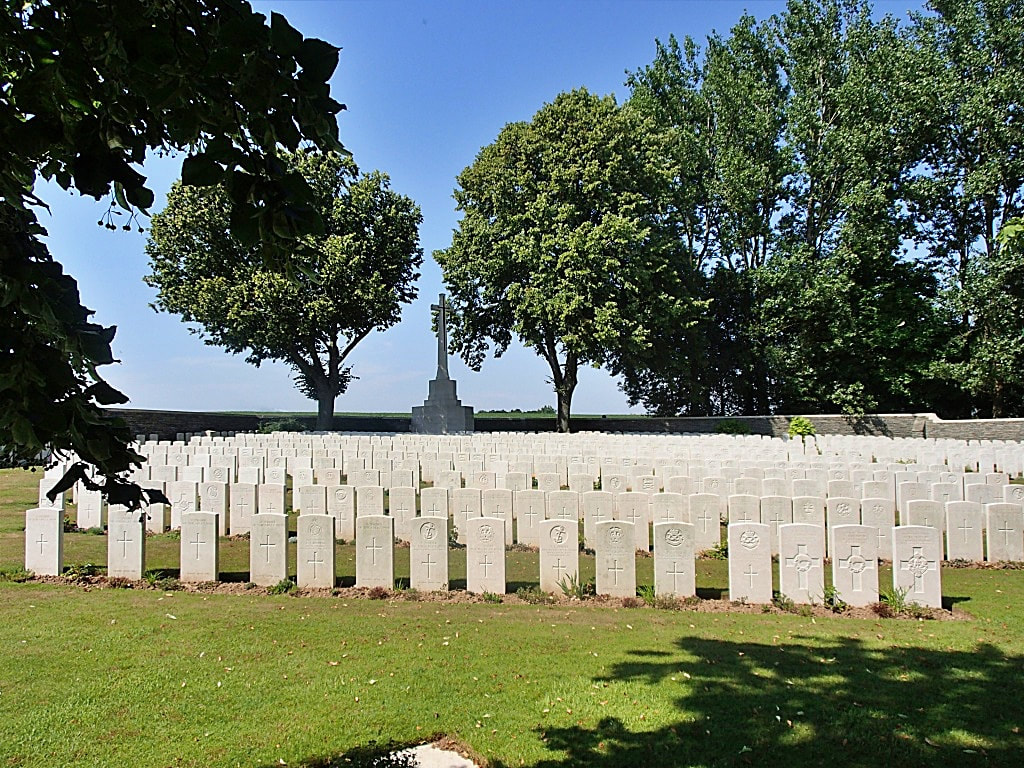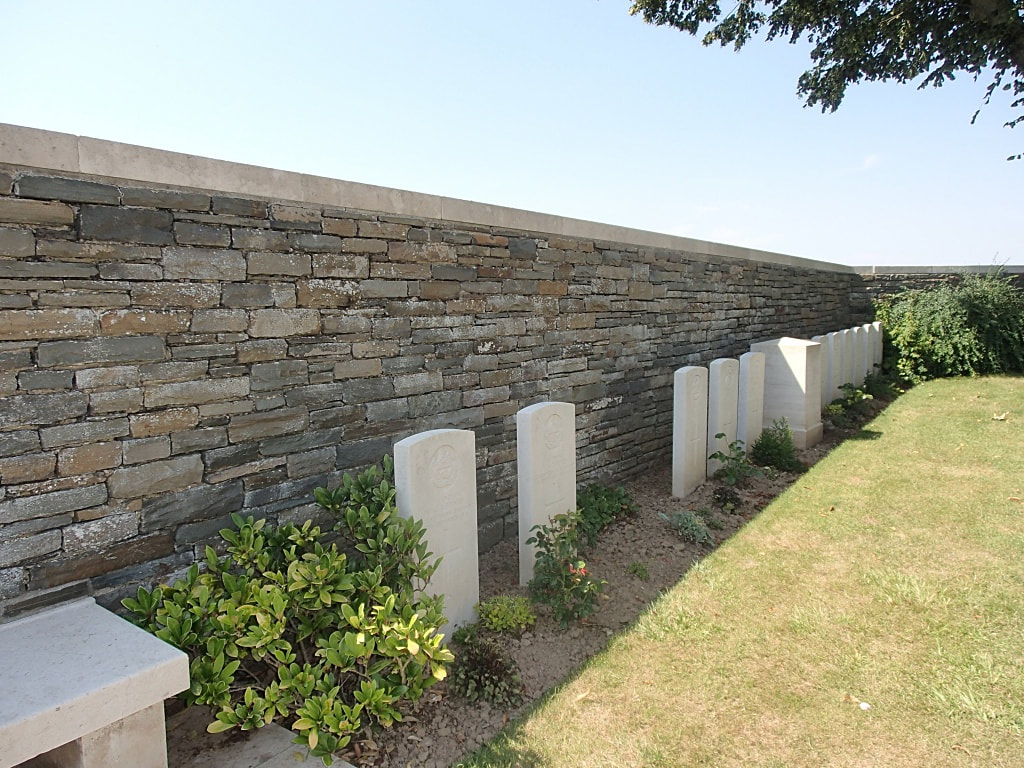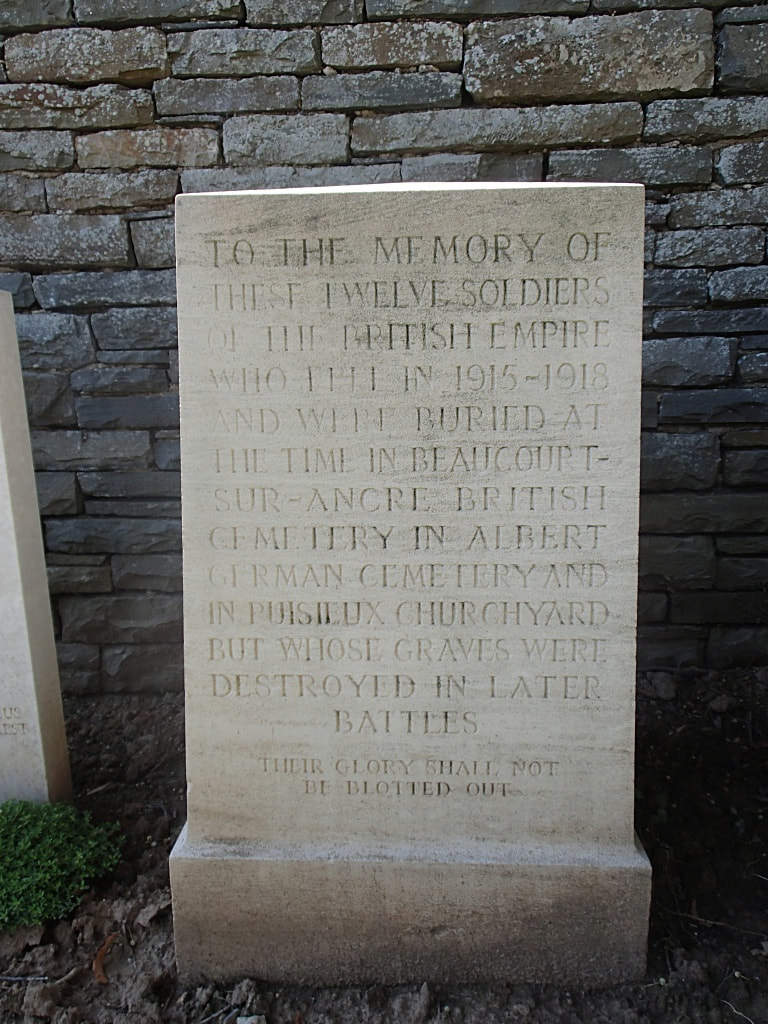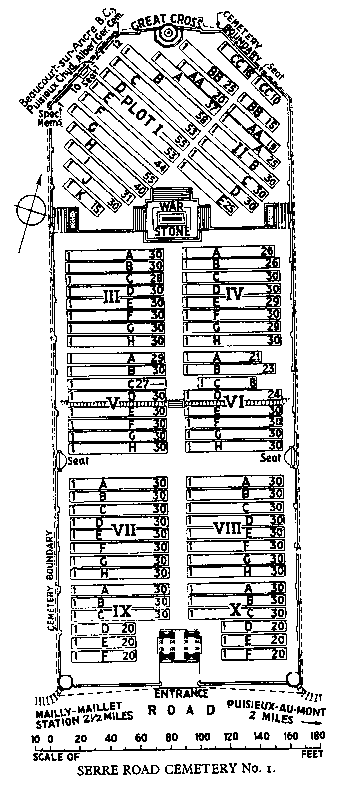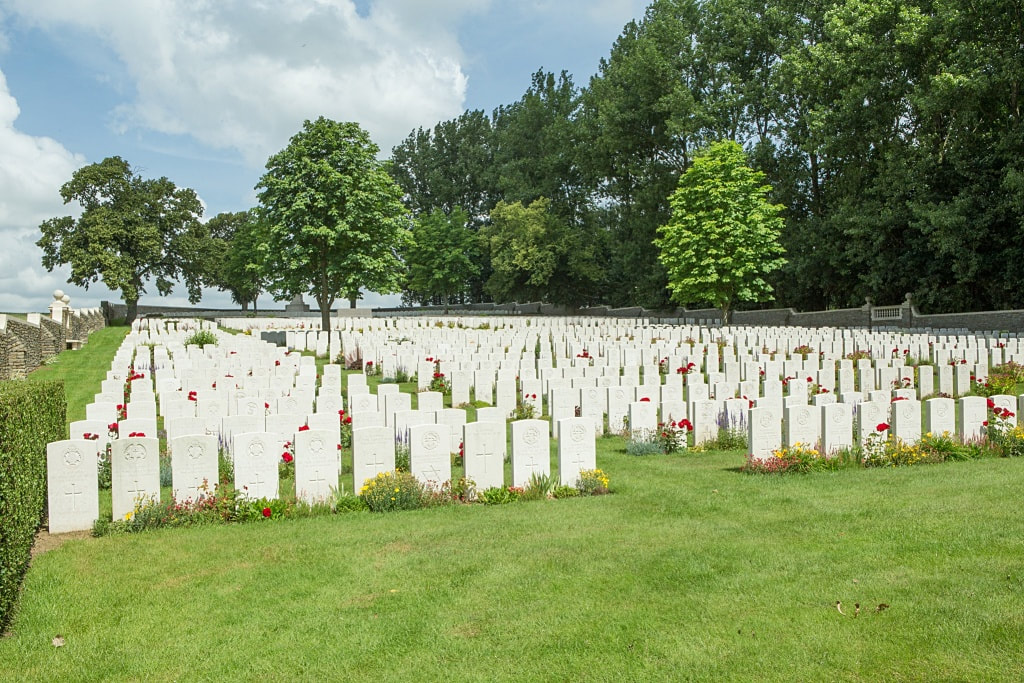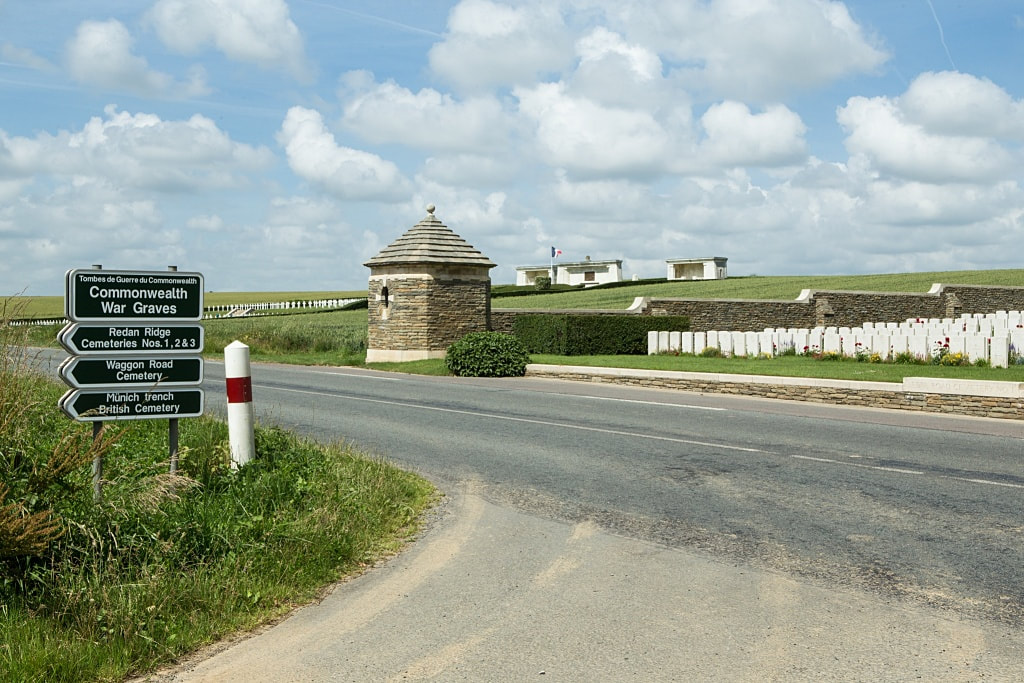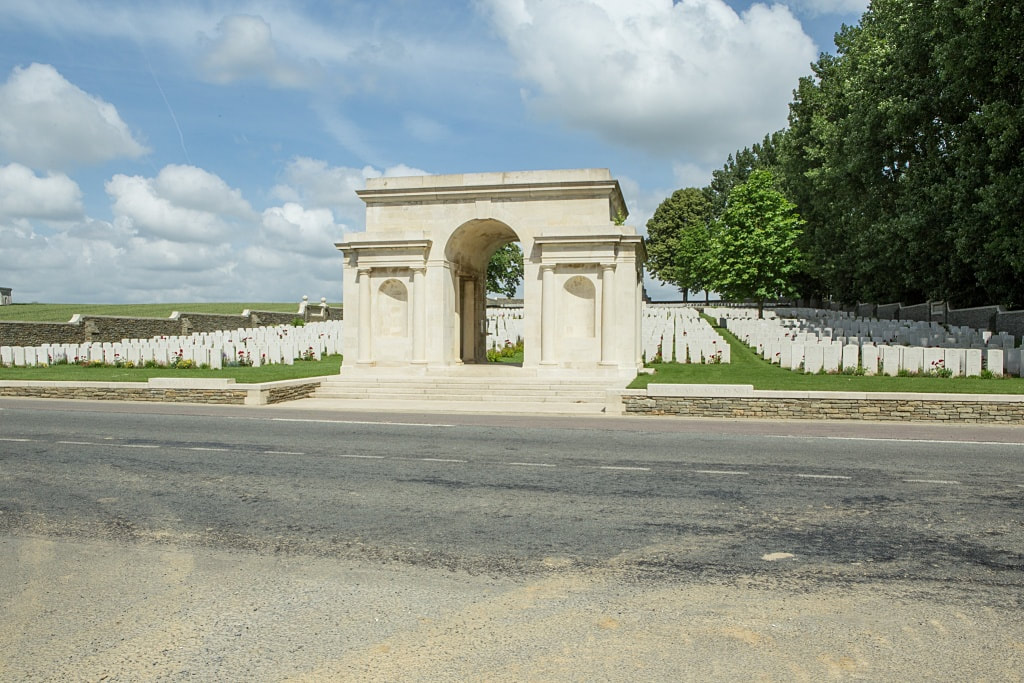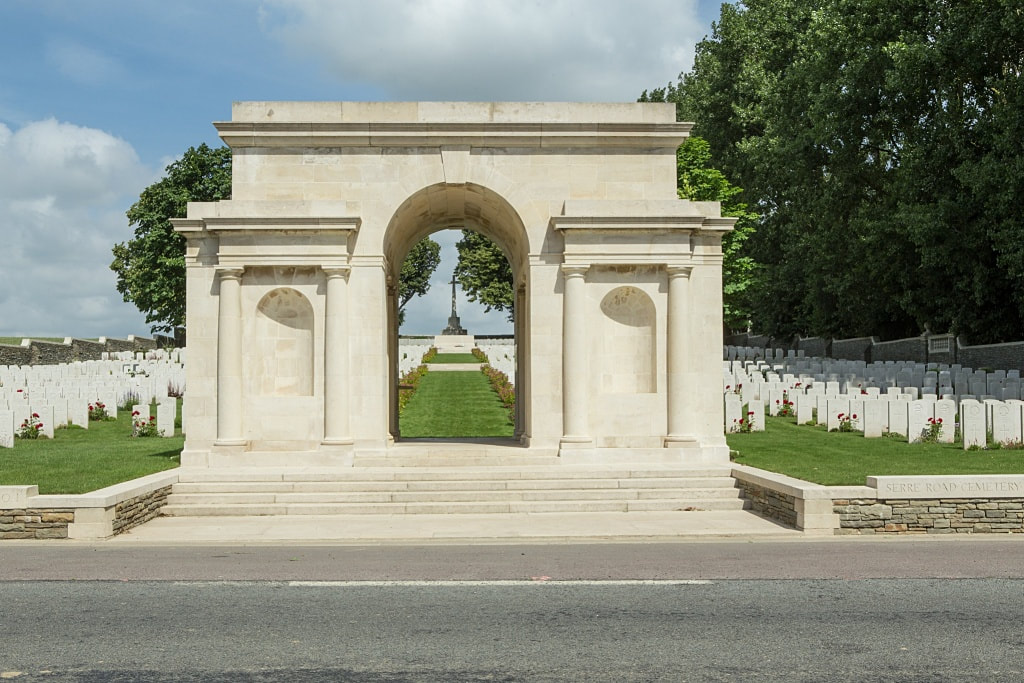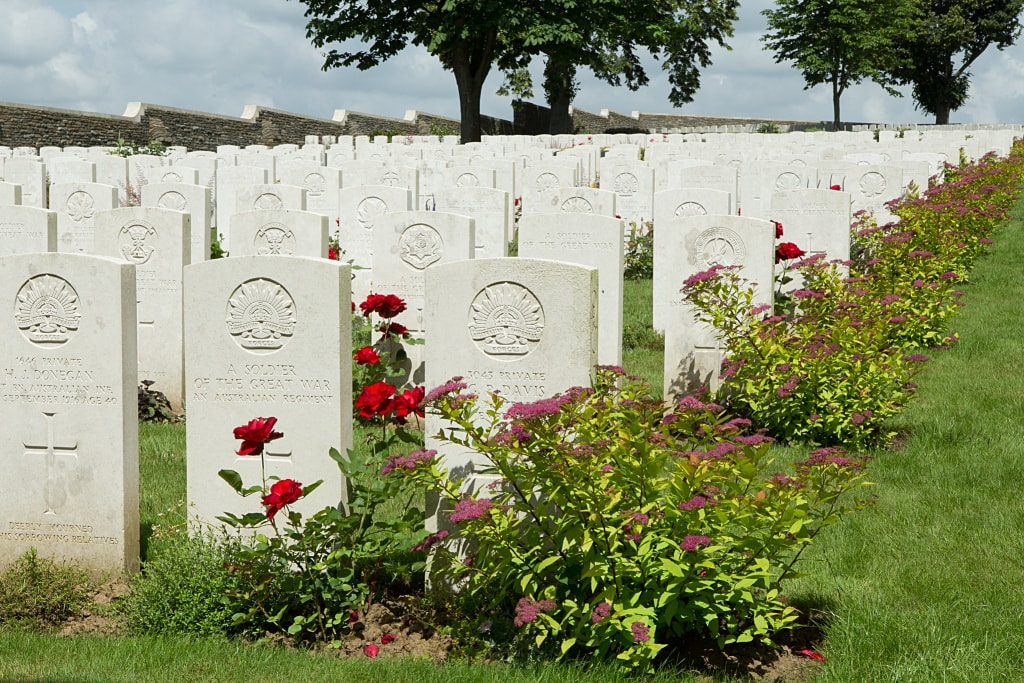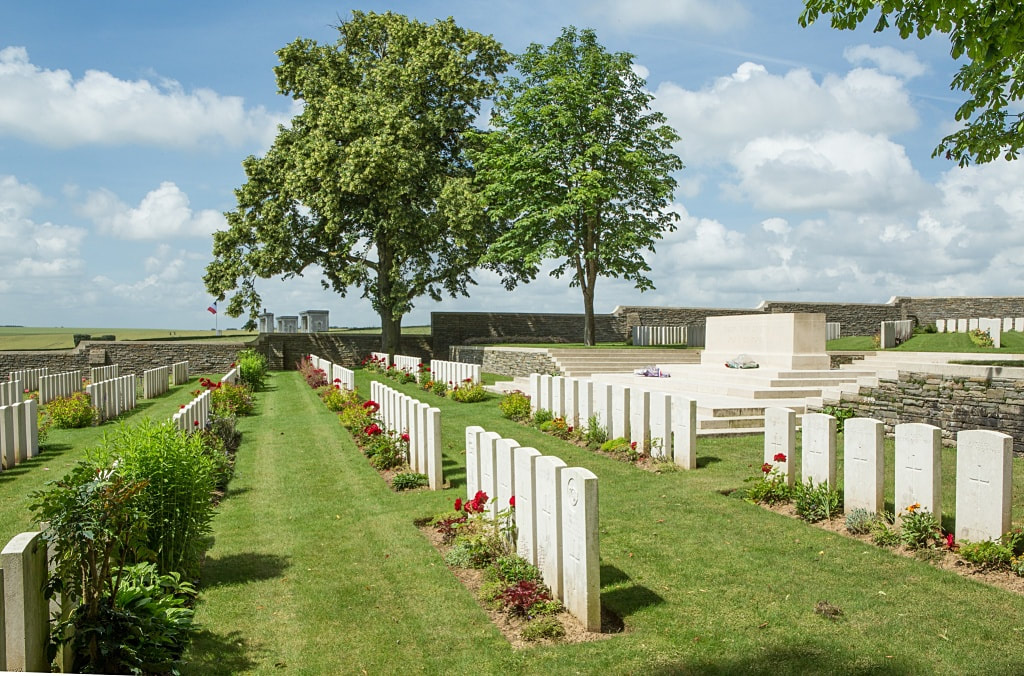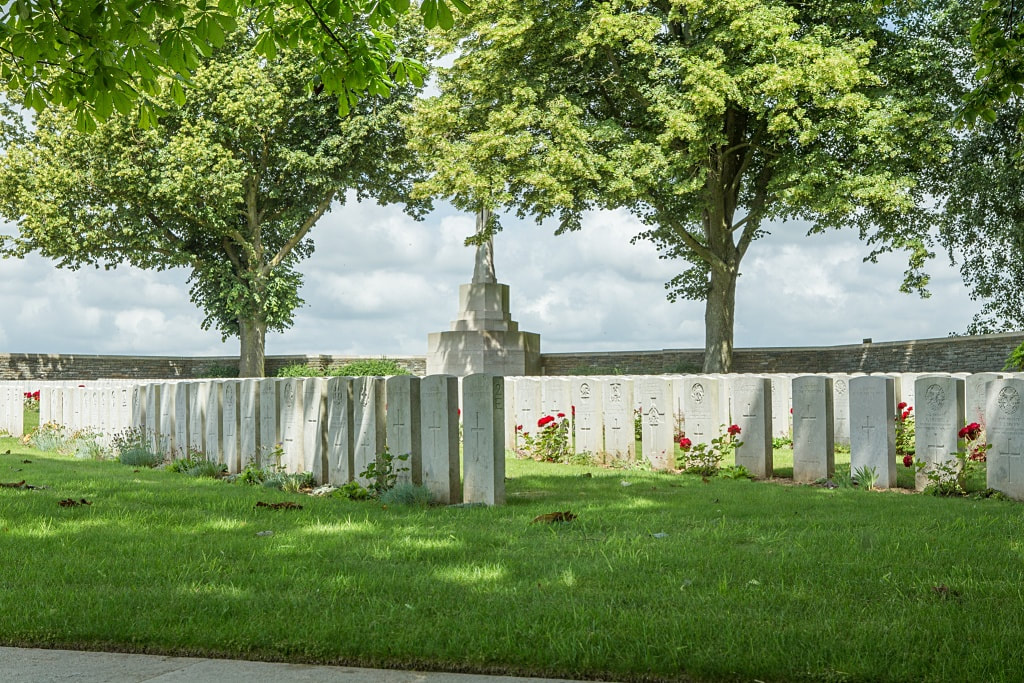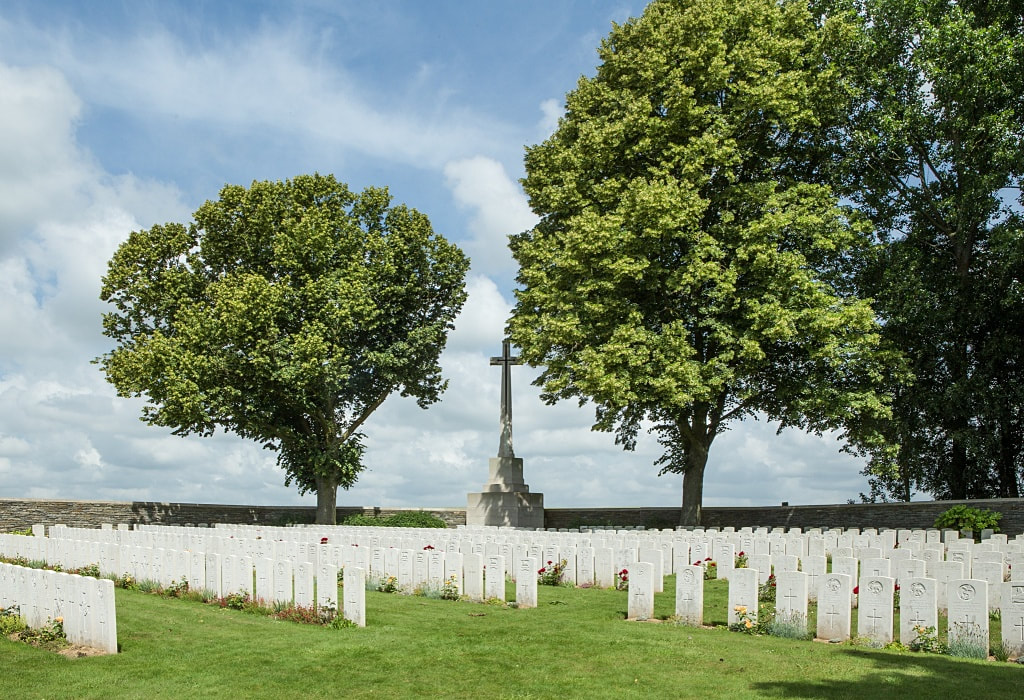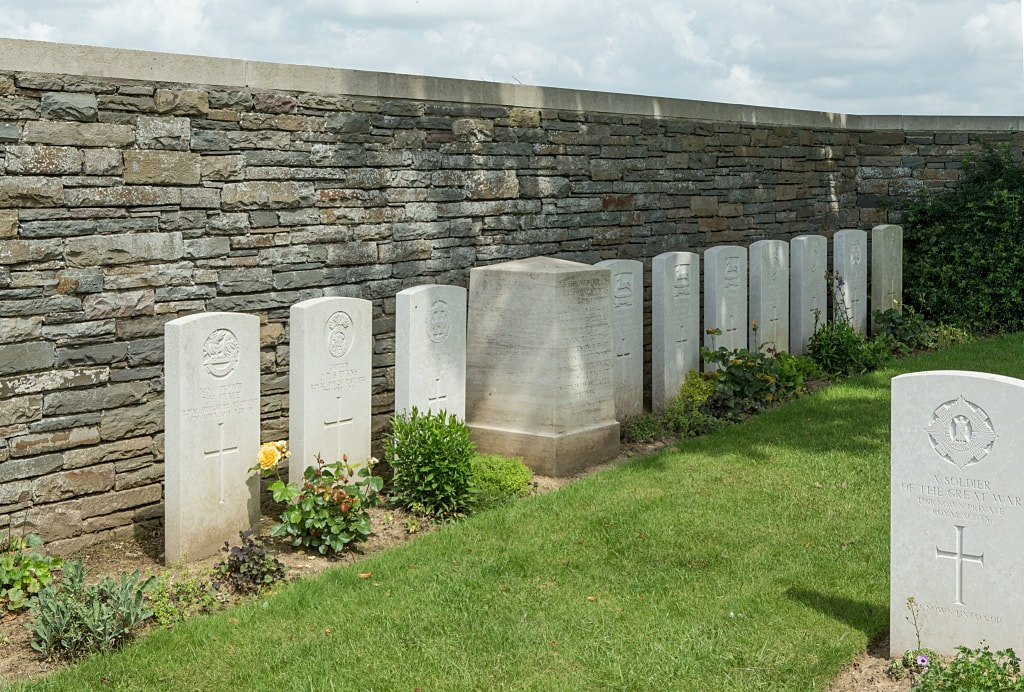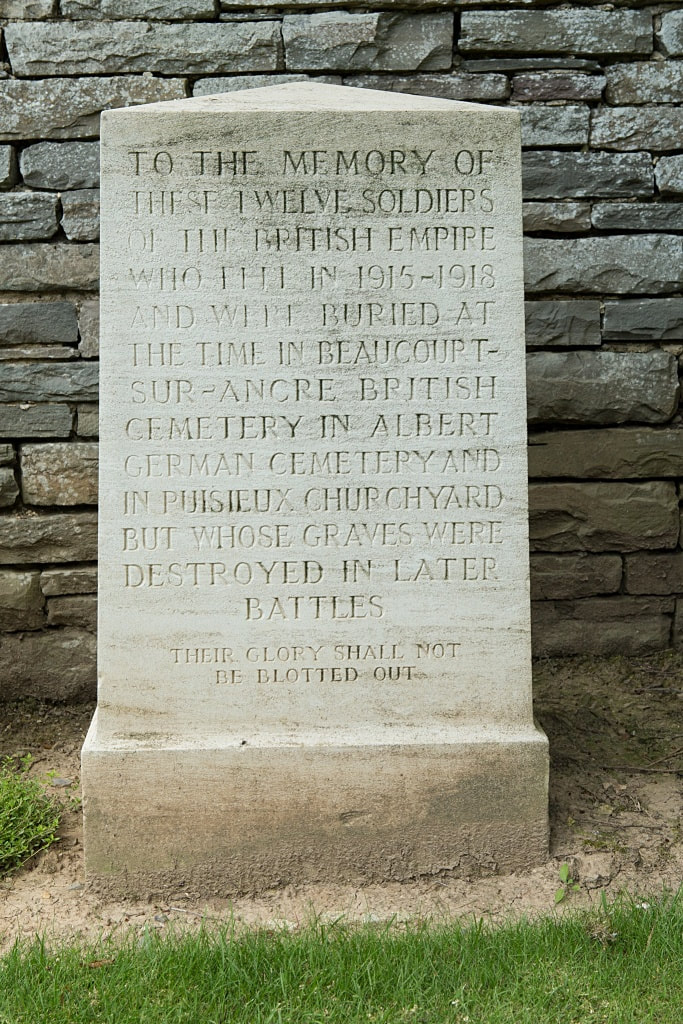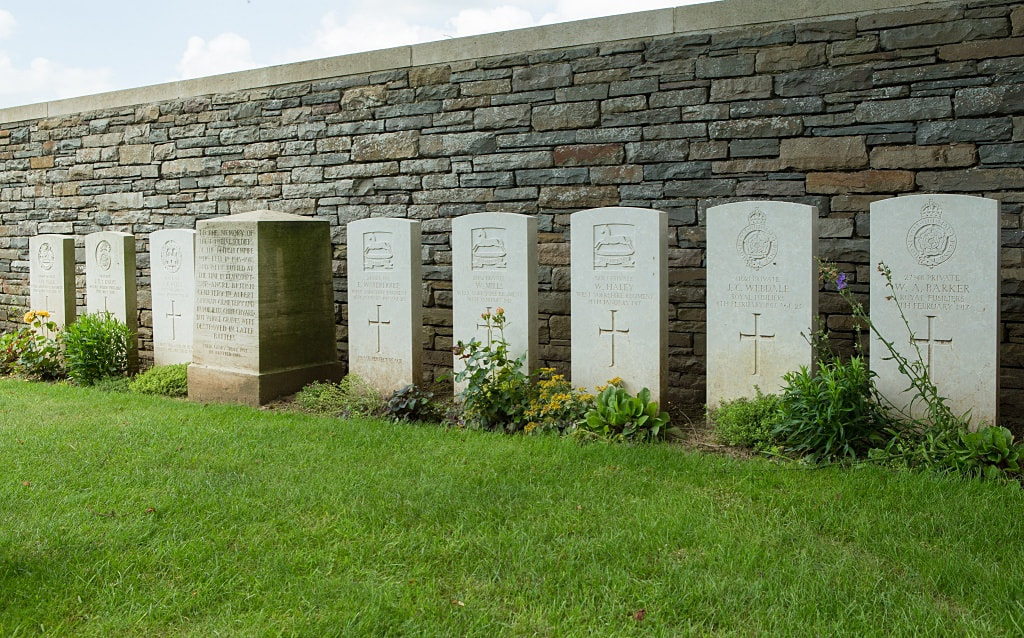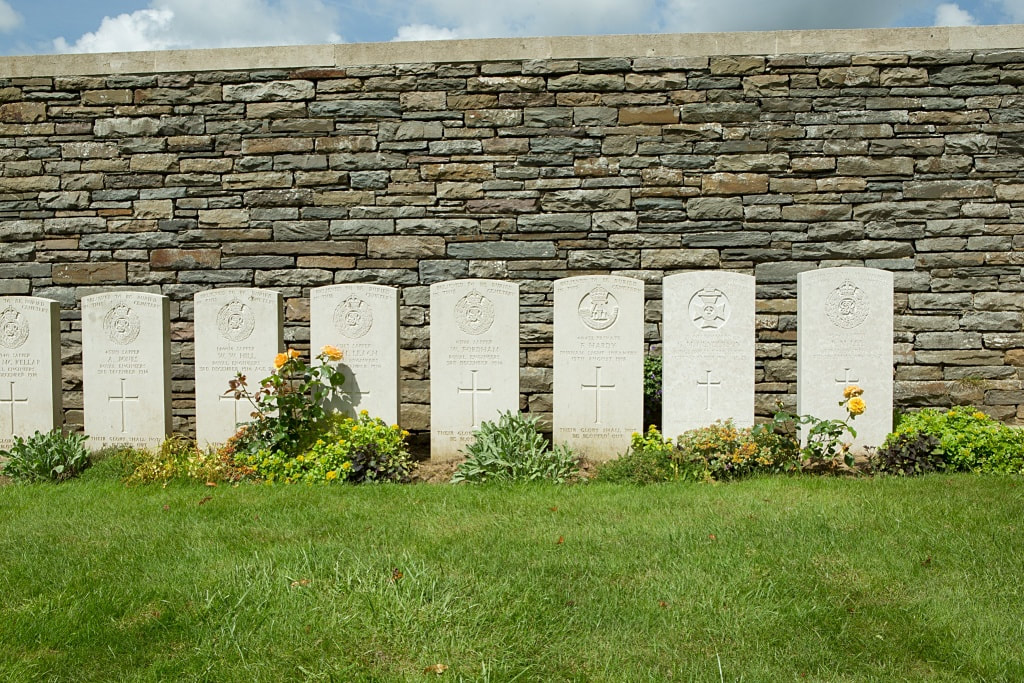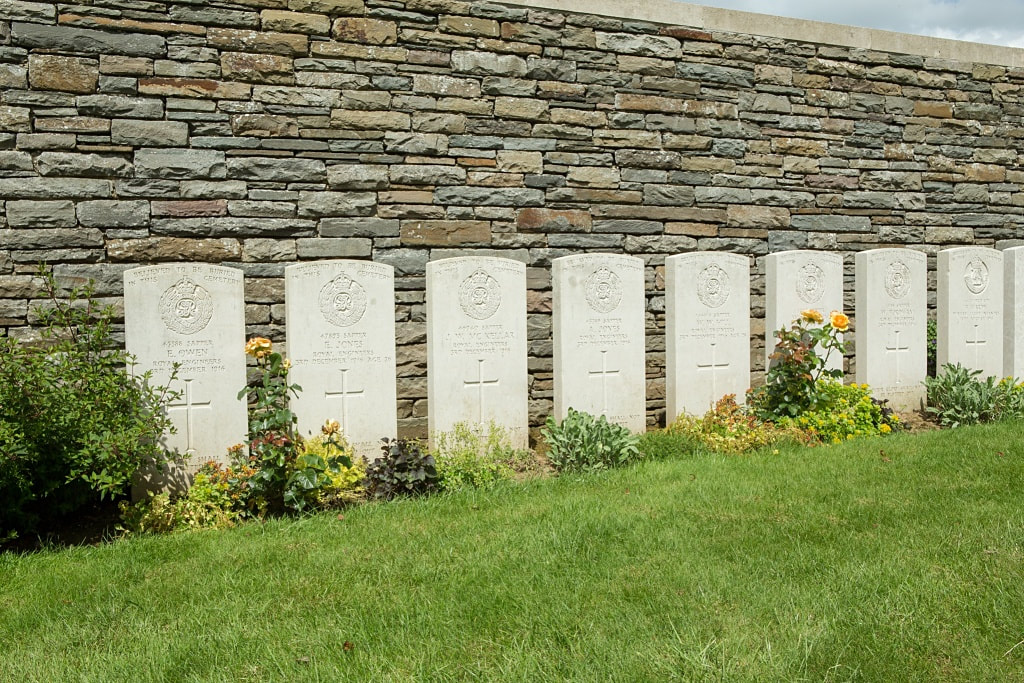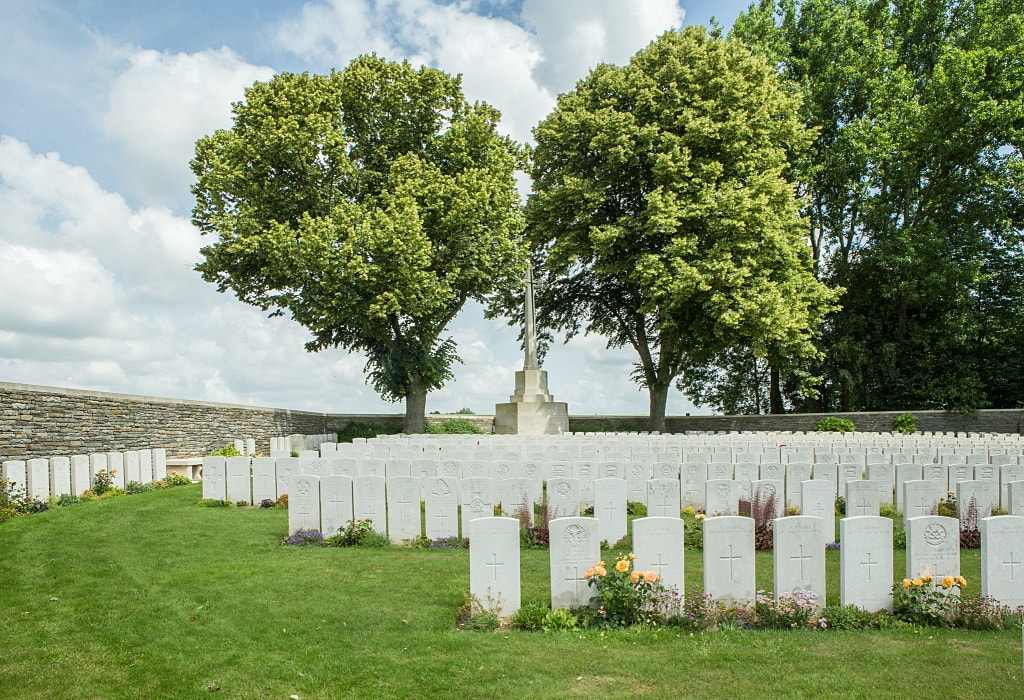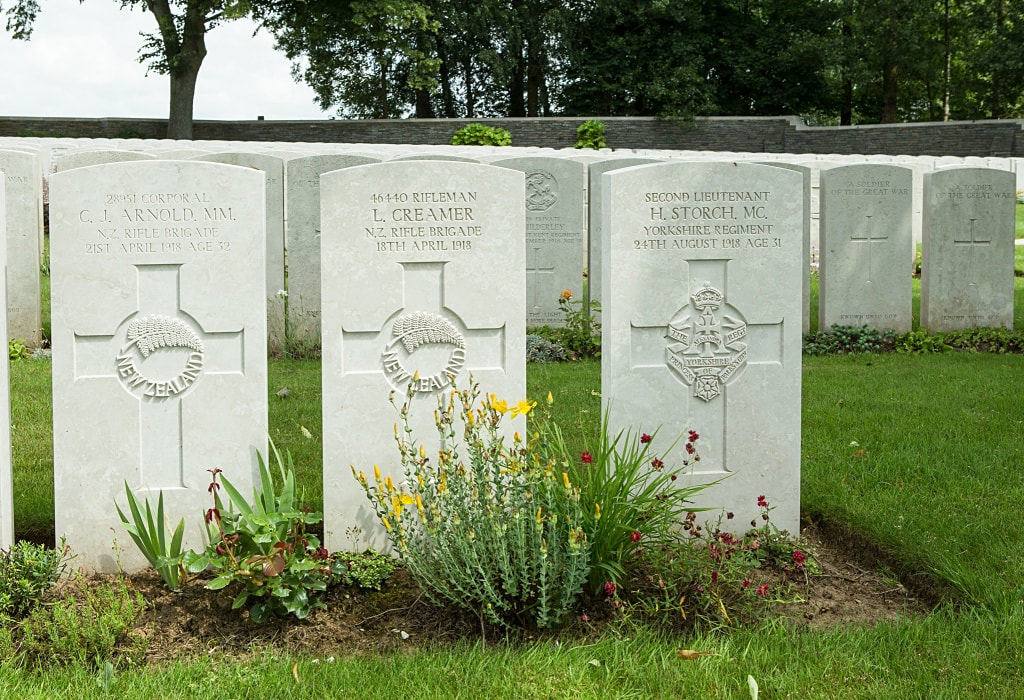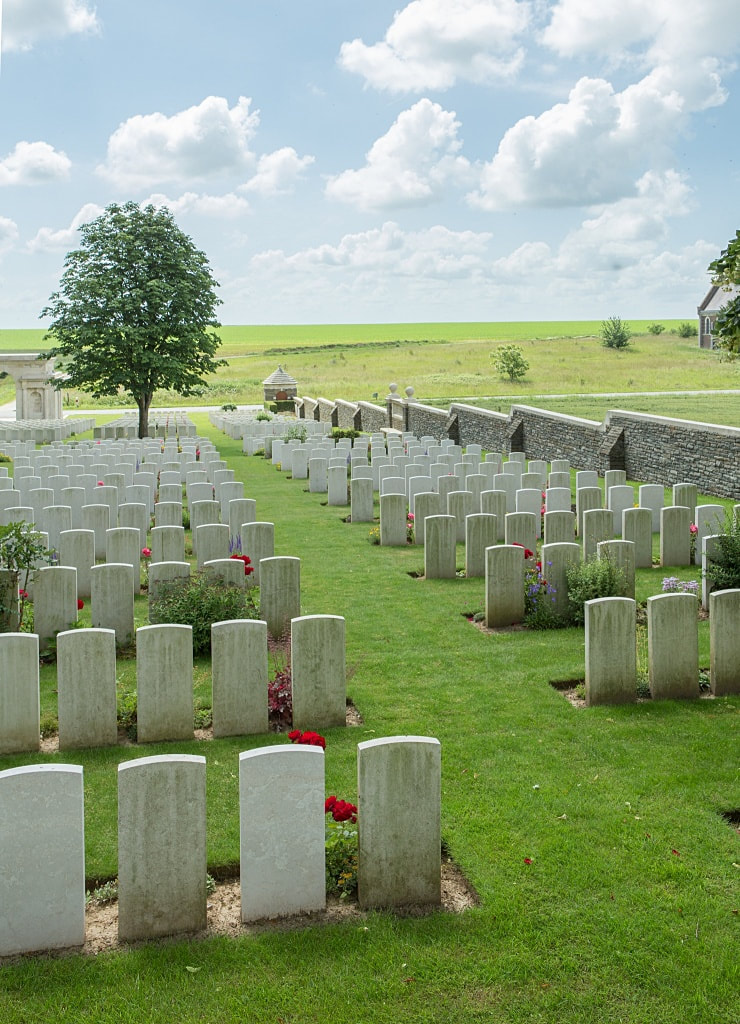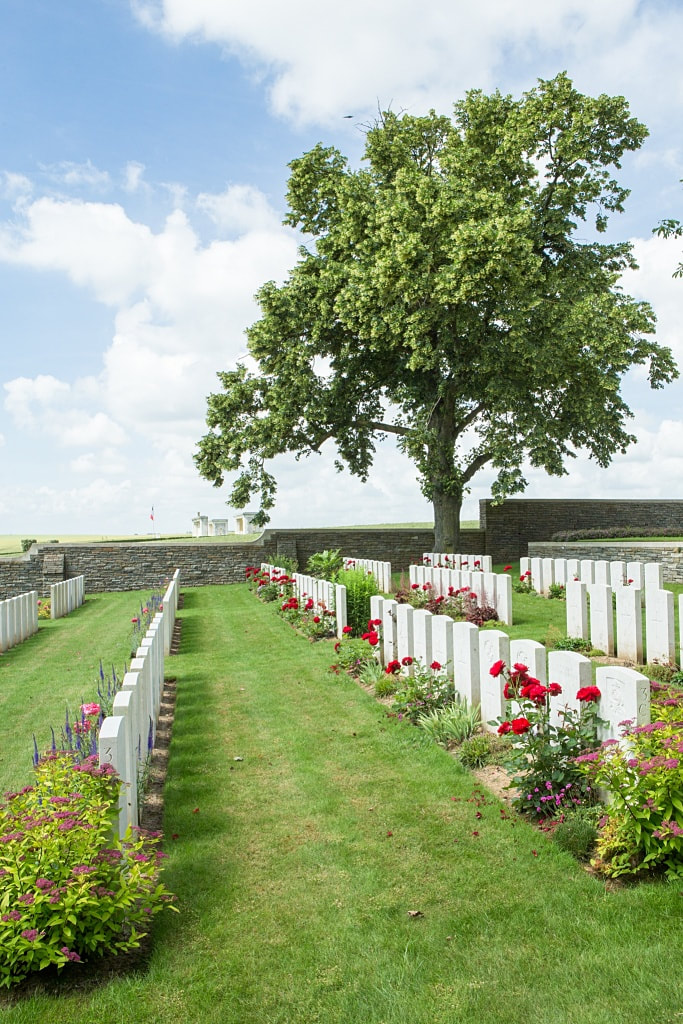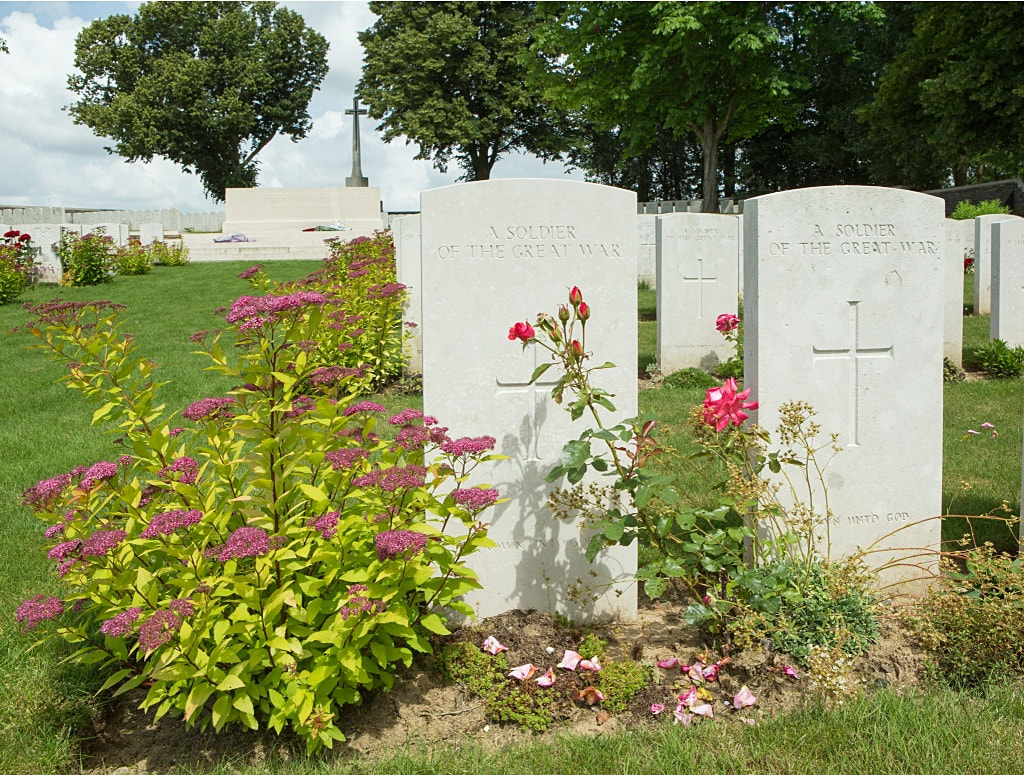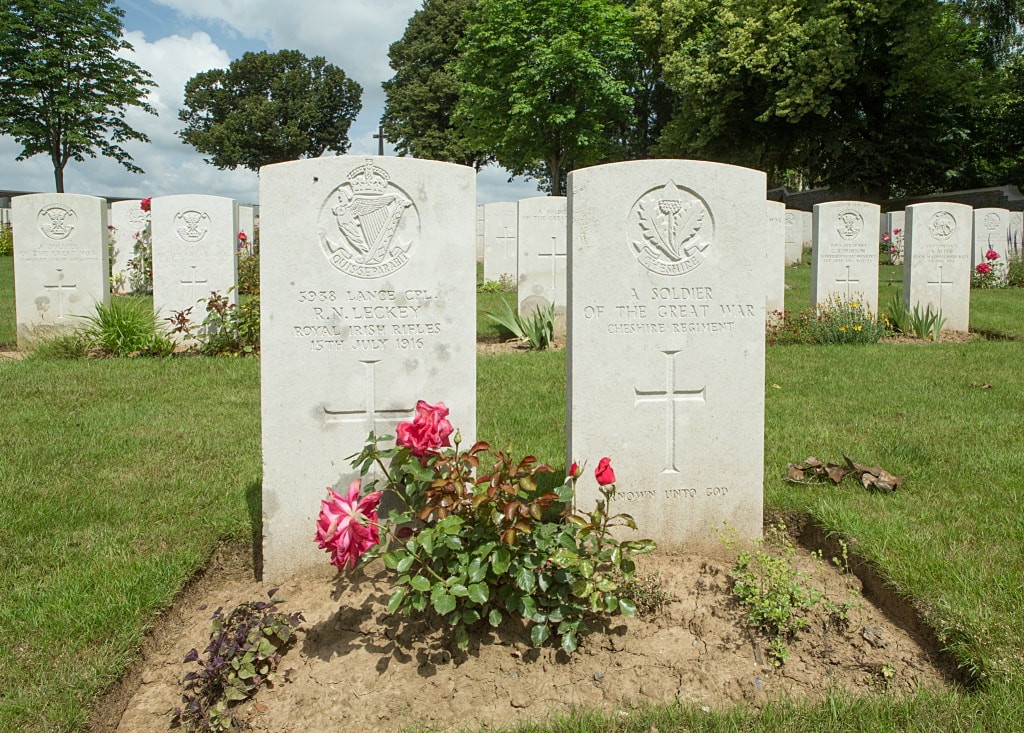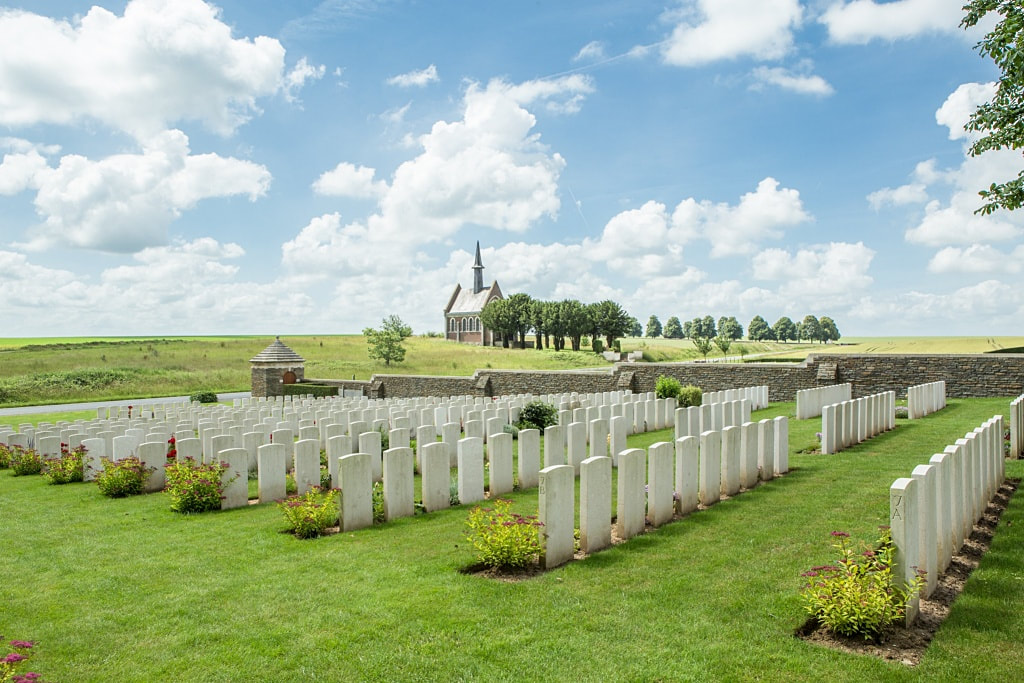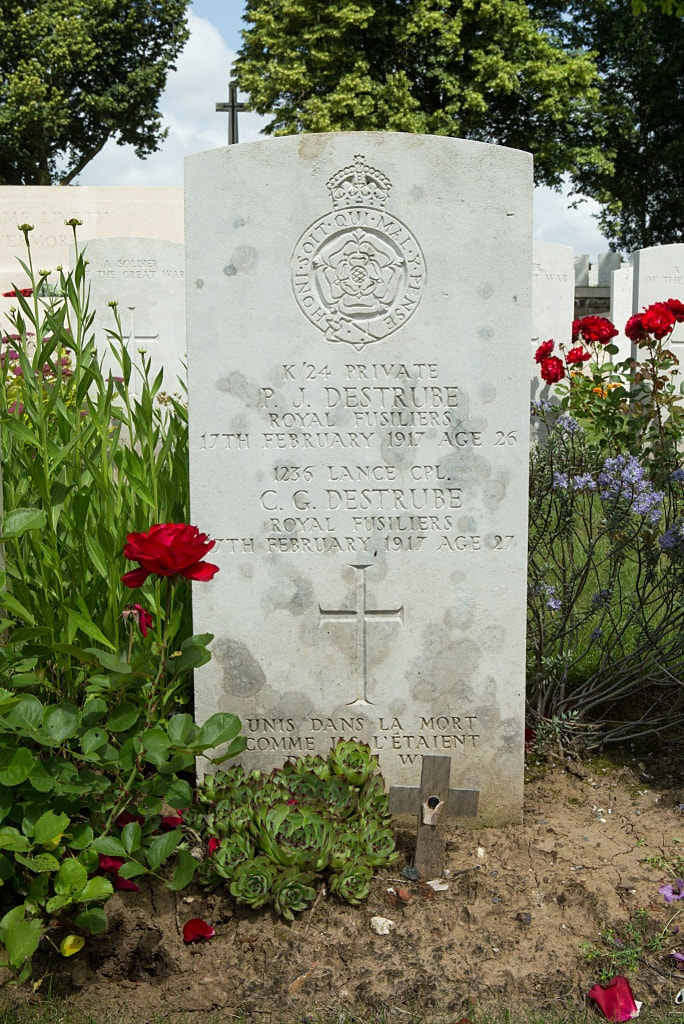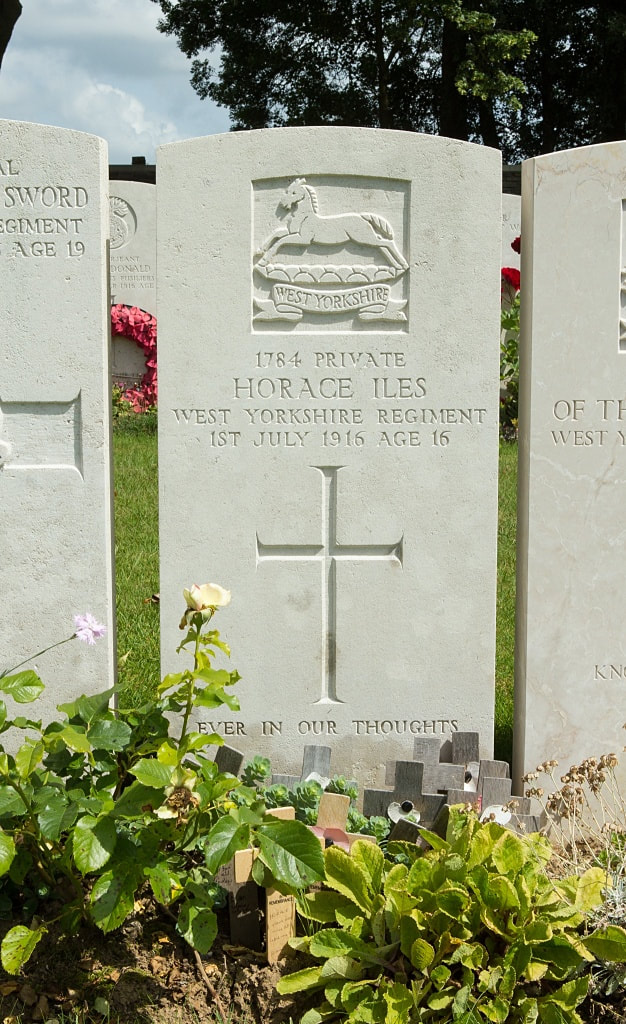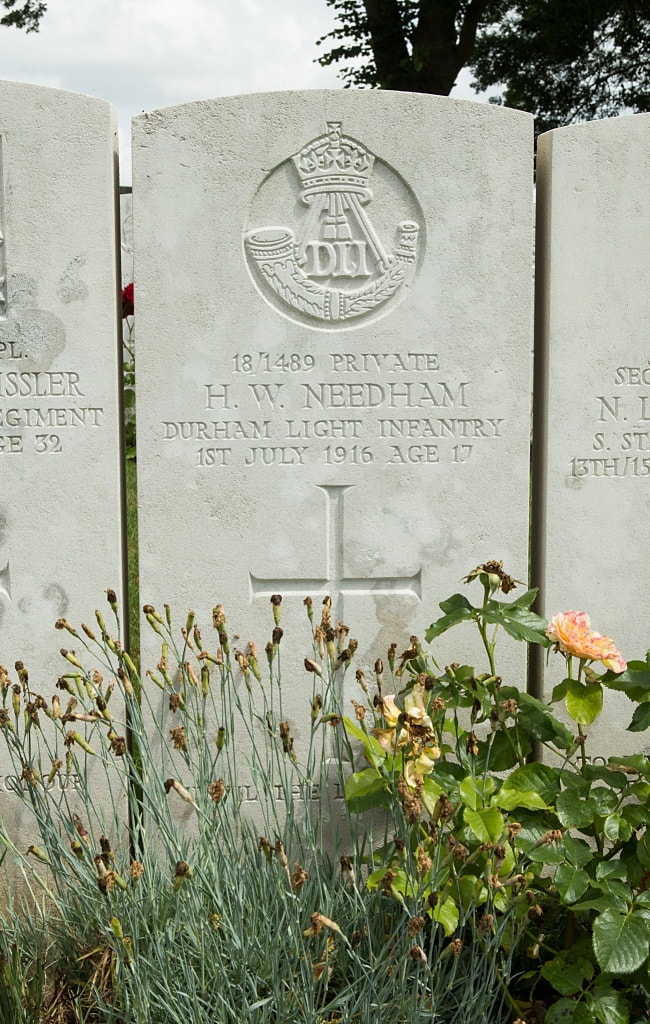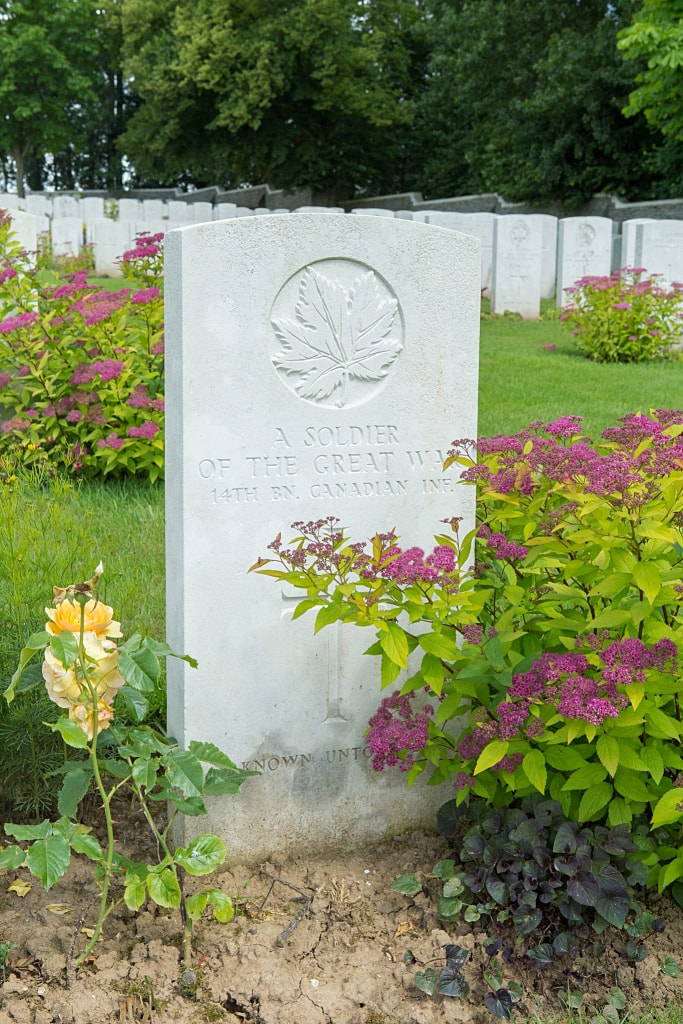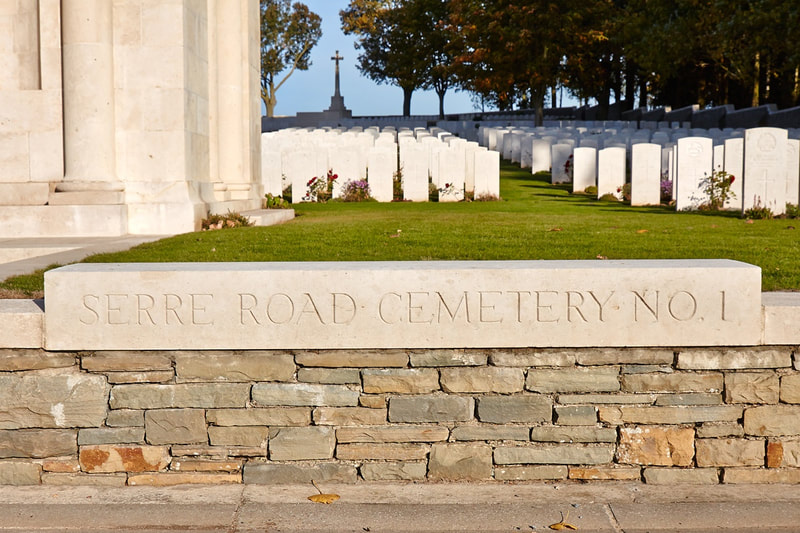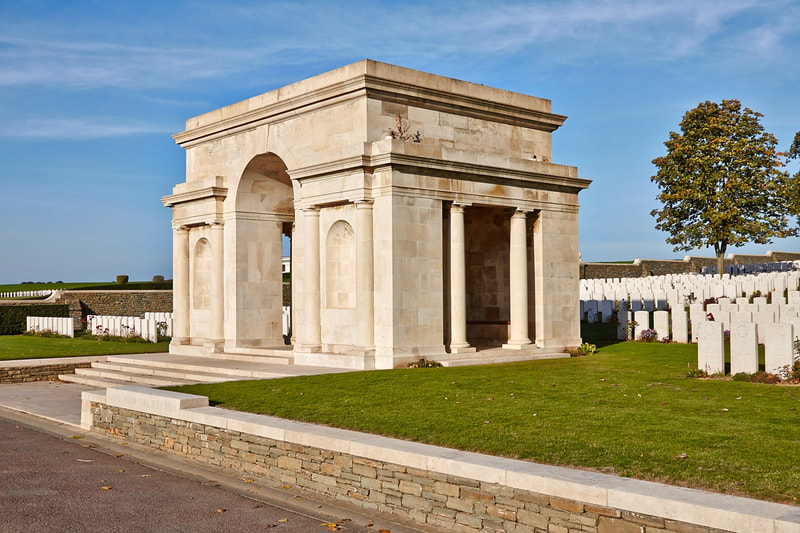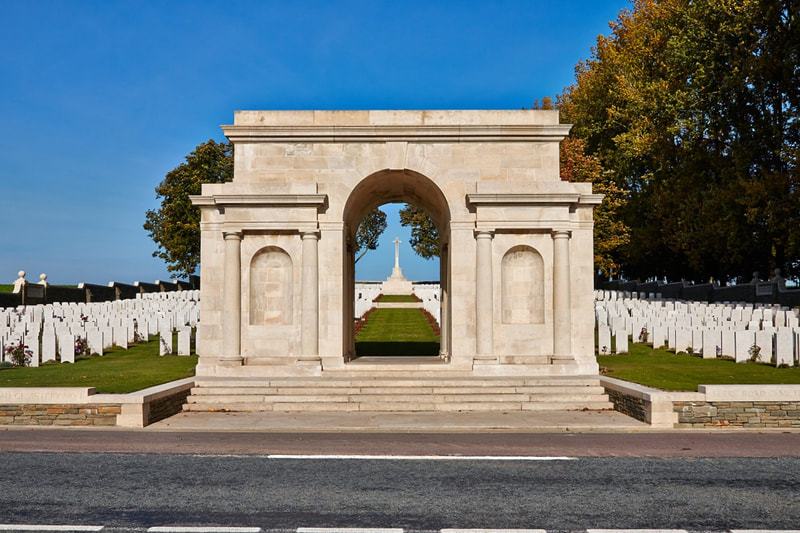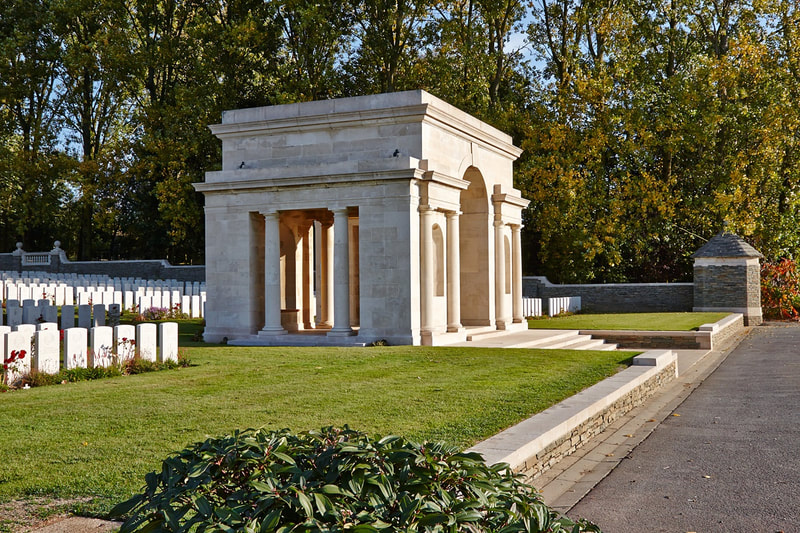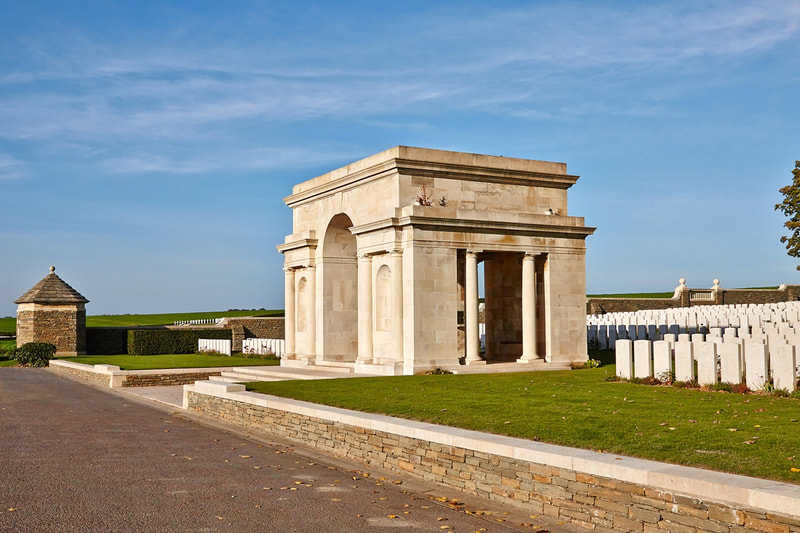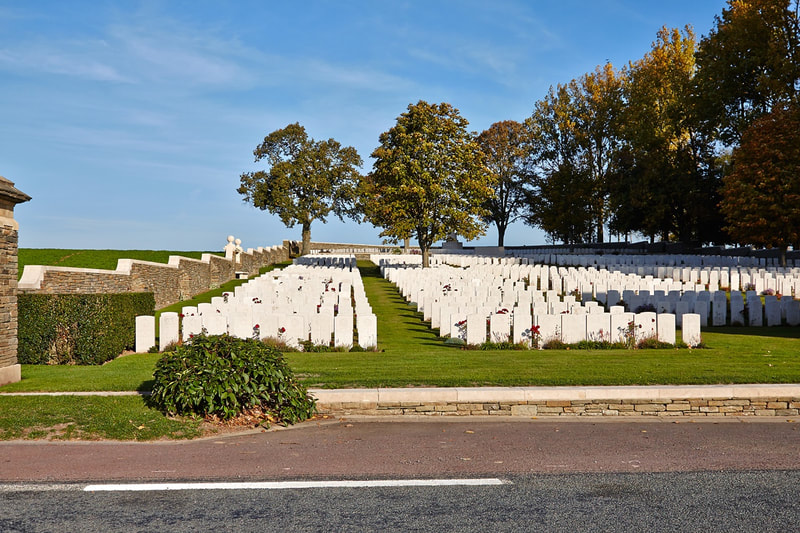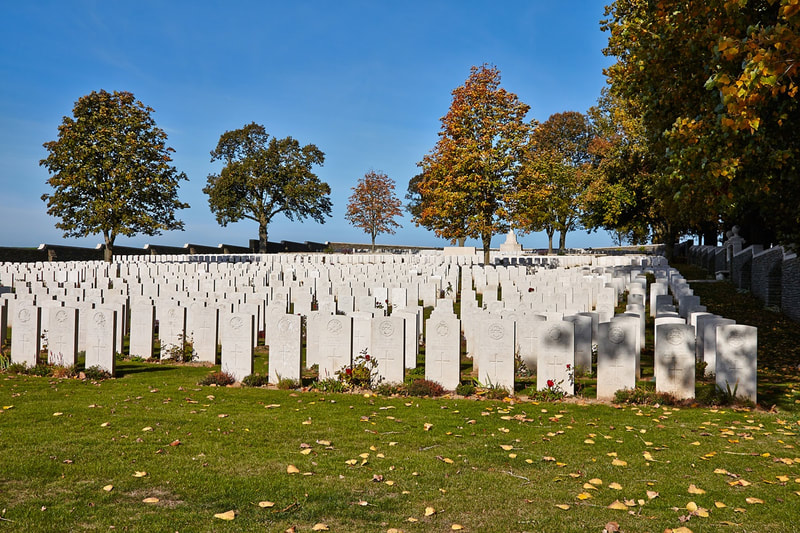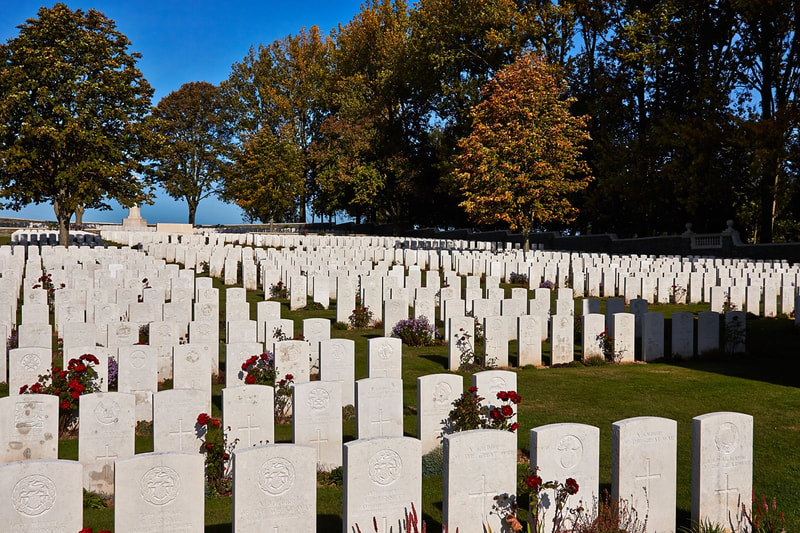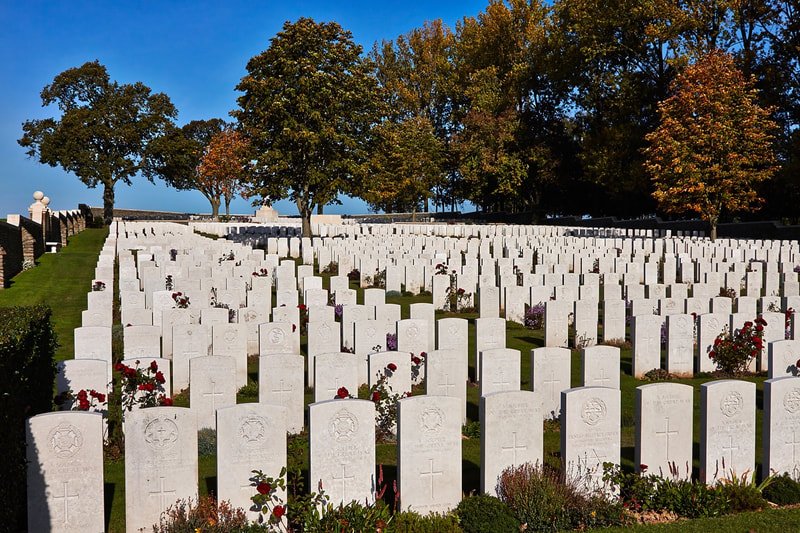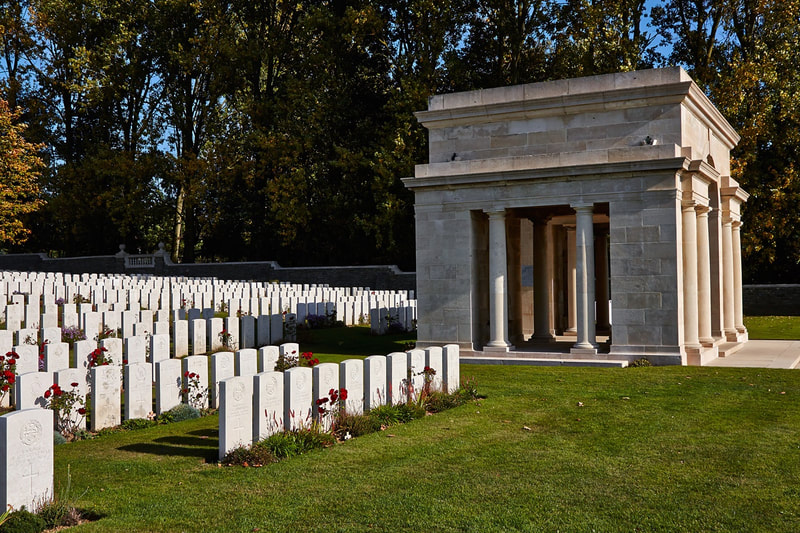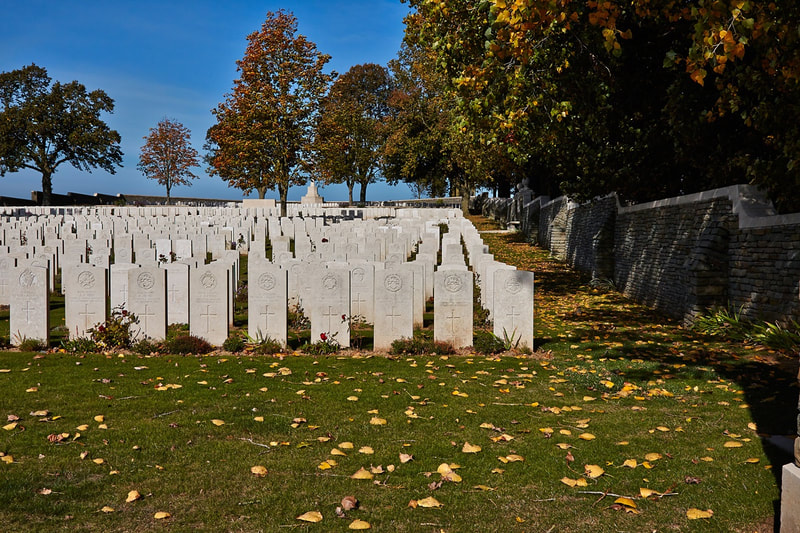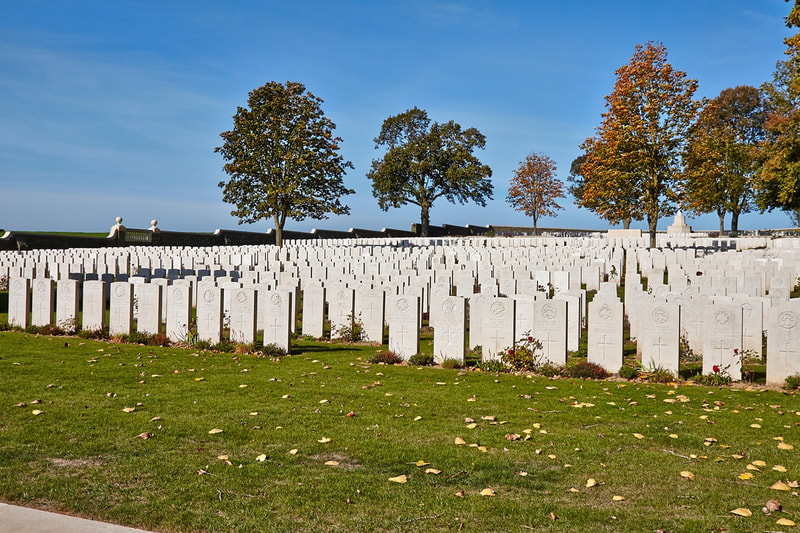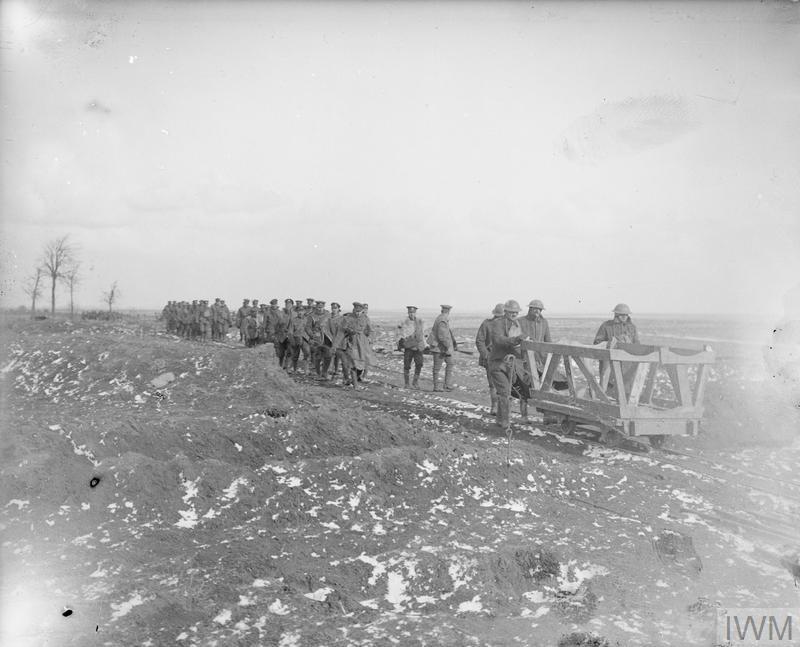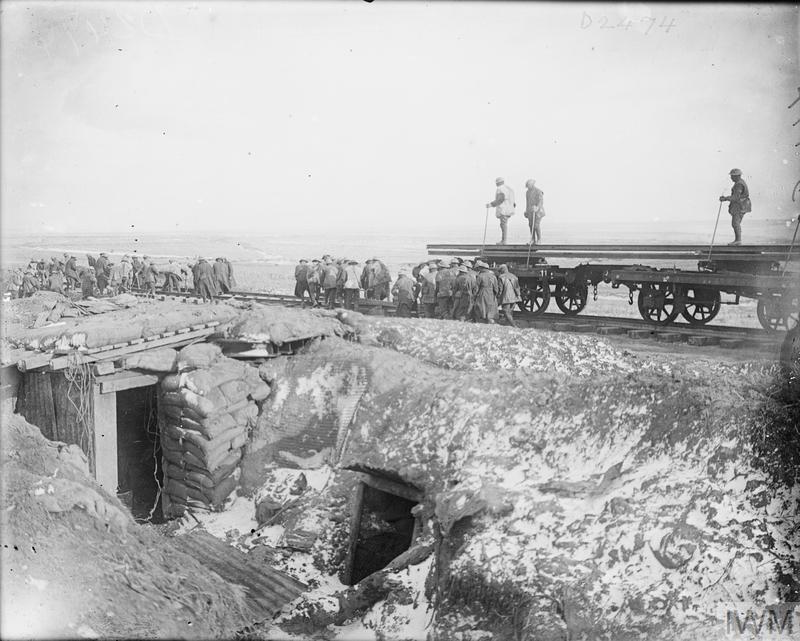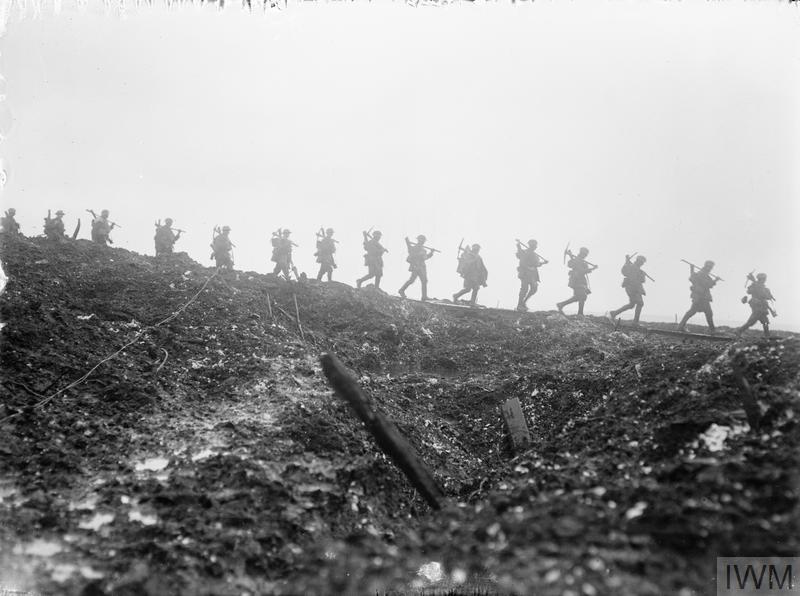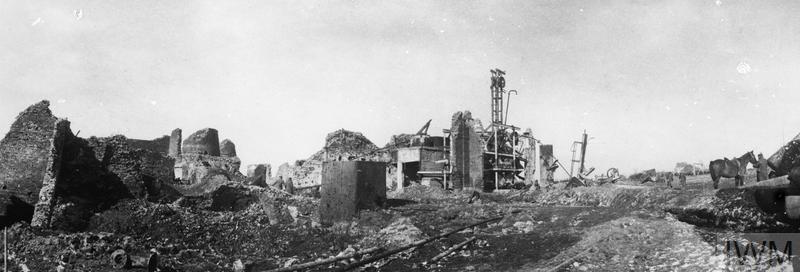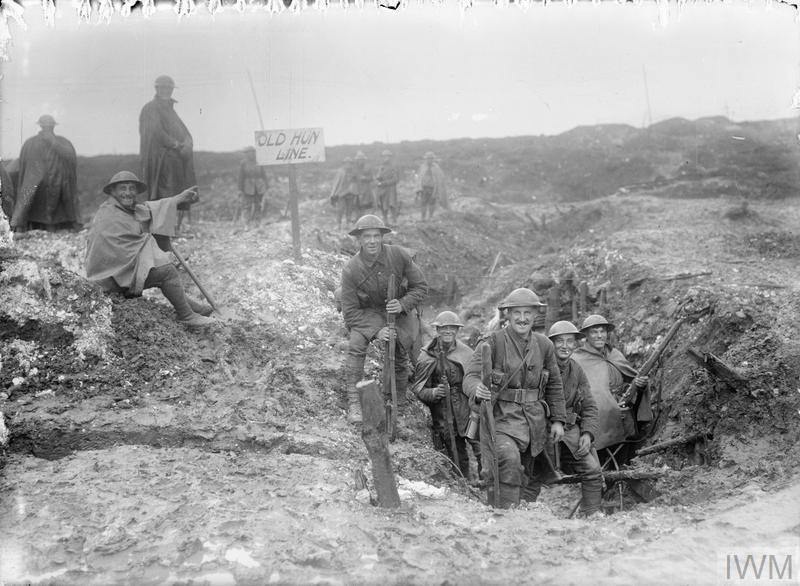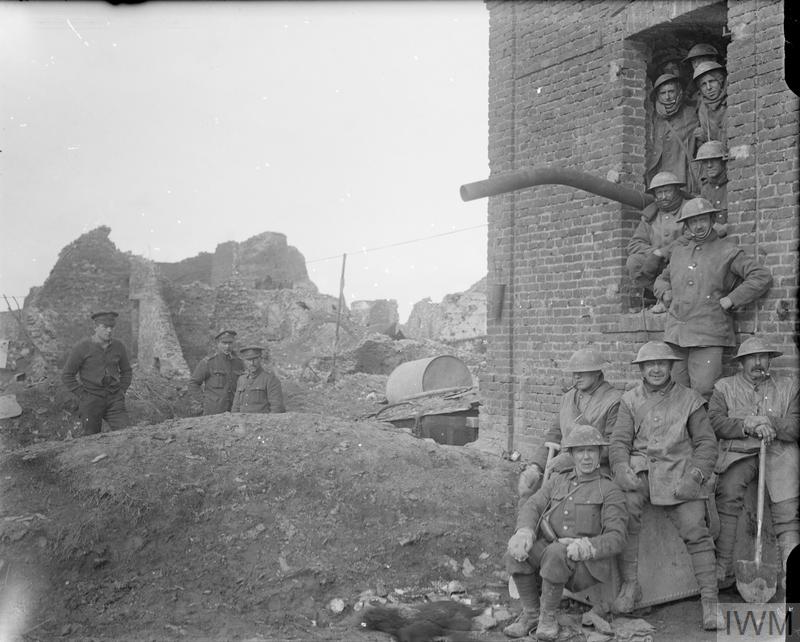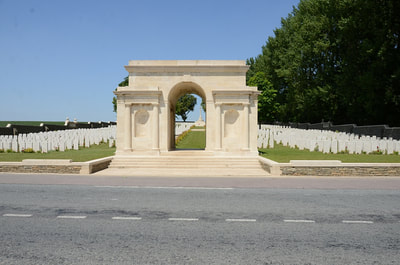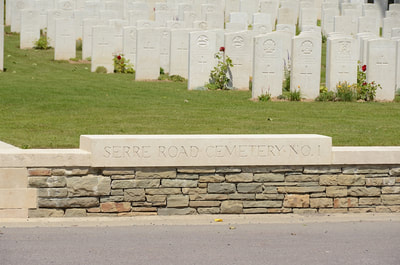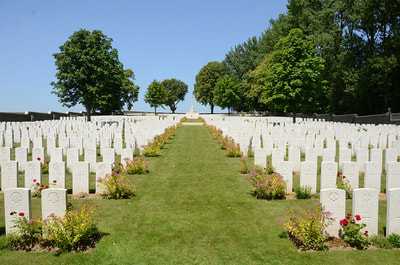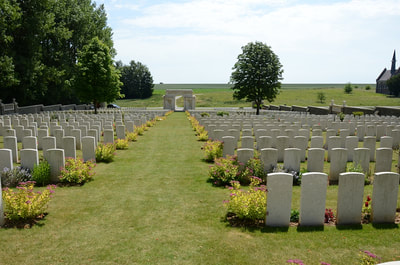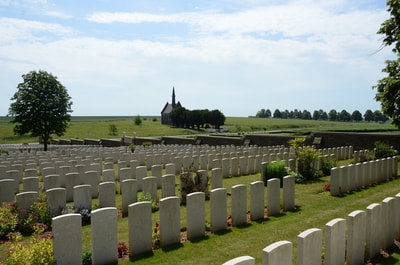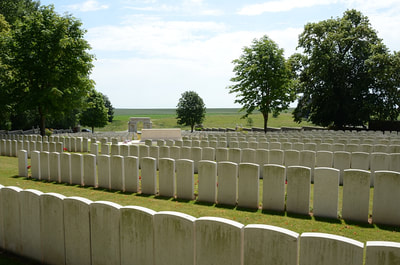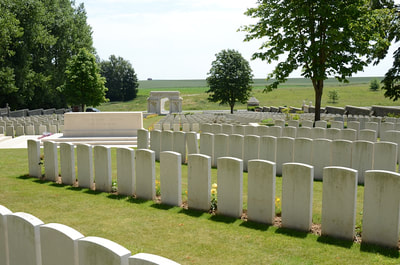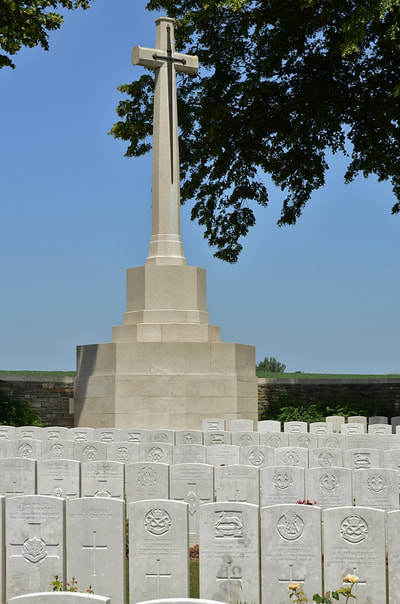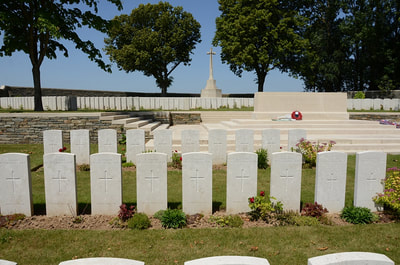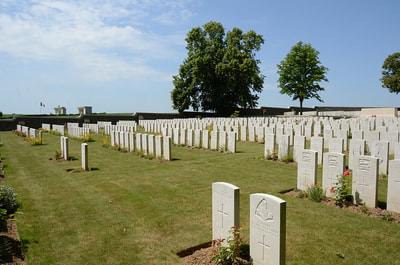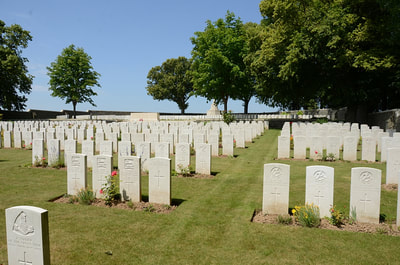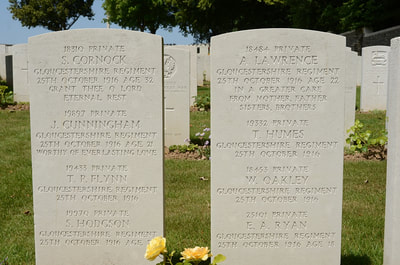SERRE ROAD CEMETERY NO. 1
Pas De Calais
France
GPS Coordinates: Latitude: 50.09989, Longitude: 2.65729
Location Information
The village of Serre is 11 kilometres north-north-east of Albert.
Using the D919 from Arras to Amiens you will drive through the villages of Bucquoy, Puisieux then Serre-les-Puisieux (approximately 20 kilometres south of Arras). On leaving Serre-les-Puisieux, 700 metres further along the D919, Serre Road No.1 Cemetery can be found on the right hand side.
Historical Information
In June 1916, the road out of Mailly-Maillet to Serre and Puisieux entered No Man's Land about 1,300 metres south-west of Serre. On 1 July 1916, the 31st and 4th Divisions attacked north and south of this road, and although parties of the 31st Division reached Serre, the attack failed. The 3rd and 31st Divisions attacked once more on the 13 November, but again without success.
Early in 1917, the Germans fell back to the Hindenburg Line and on 25 February, Serre was occupied by the 22nd Manchesters. The village changed hands once more in March 1918 and remained under German occupation until they withdrew in August.
In the spring of 1917, the battlefields of the Somme and Ancre were cleared by V Corps and a number of new cemeteries were made, three of which are now named from the Serre Road. Serre Road Cemetery No.1 was begun in May 1917 and these graves can now be found in Plot I, Rows A to G. The rest of the cemetery was added after the Armistice, when graves were brought in from the nearby battlefields and from the following smaller cemeteries:-
ACHEUX COMMUNAL CEMETERY FRENCH EXTENSION, in which two soldiers from the United Kingdom were buried in April and May 1916.
ALBERT GERMAN CEMETERY ("am Nordwest Ausgang"), where 18 soldiers from the United Kingdom were buried in April and May 1918.
BEAUCOURT-SUR-ANCRE BRITISH CEMETERY (V Corps Cemetery No.13), in the middle of the village, which contained the graves of 21 officers and men from the United Kingdom who fell in November 1916 and February, 1917.
CERISY-BULEUX CHURCHYARD, in which one soldier from the United Kingdom was buried in November 1916.
PUISIEUX CHURCHYARD, where two soldiers from the United Kingdom were buried by the enemy in September 1915.
TEN TREE ALLEY CEMETERY No.1, PUISIEUX (V Corps Cemetery No.24), 700 metres South-East of Serre, which contained the graves of 37 soldiers from the United Kingdom who fell in November 1916 - February 1917 (the present Ten Tree Alley Cemetery was No.2.).
There are now 2,426 casualties of the First World War buried or commemorated in this cemetery. 1,728 of the graves are unidentified but special memorials commemorate 10 casualties known or believed to be buried among them. Other special memorials commemorate 3 men who were buried in Albert German Cemetery, 7 men who were buried in Beaucourt British Cemetery and 2 men who were buried in Puisieux Churchyard, whose graves were destroyed by shell fire. Most of the graves date from 1916.
Total Burials: 2,434.
Identified Casualties: United Kingdom 573, Australia 64, Canada 35, New Zealand 23, South Africa 3. Total 698.
Unidentified Casualties: United Kingdom 1,552, Canada 86, Australia 83, New Zealand 4, South Africa 3. Total 1,728.
The cemetery was designed by Noel Ackroyd Rew
Dedications
14989 Private A. Aitken, 16th Bn. Highland Light Infantry, 1st July 1916, aged 27. Son of Andrew and Mary Aitken, of 68, North Square, Gartsherrie, Coatbridge, Lanarkshire.
Remembered with pride by great-great nephew, Colin McAndrew
Serre Road Cemetery No.1 before the current entrance was constructed ©CWGC
Images in gallery below © Werner Van Caneghem
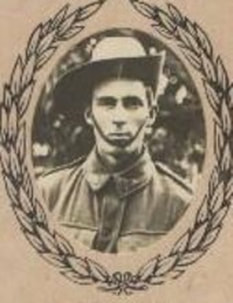
3275 Private
Henry Michael Carroll
12th Bn. Australian Infantry. A. I. F.
between 19th August 1916 and 22nd August 1916, aged 25.
Plot VII. F. 12.
Picture courtesy of Patrick Lernout
Henry Michael Carroll
12th Bn. Australian Infantry. A. I. F.
between 19th August 1916 and 22nd August 1916, aged 25.
Plot VII. F. 12.
Picture courtesy of Patrick Lernout
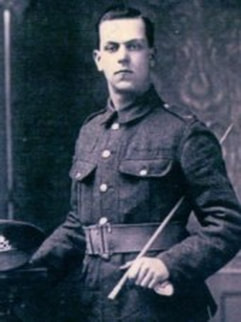
12265 Lance Corporal
J. J. Keys
2nd Bn. South Staffordshire Regiment
15th November 1916.
Plot I. D. 30.
Picture courtesy of Russell Gore
J. J. Keys
2nd Bn. South Staffordshire Regiment
15th November 1916.
Plot I. D. 30.
Picture courtesy of Russell Gore
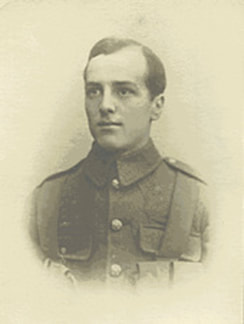
15/633 Lance Corporal
Arthur Meeson
15th Bn. West Yorkshire Regiment (Prince of Wales's Own)
1st July 1916, aged 23.
Plot I. D. 50.
Son of Walter Stainton Meeson, of Oban Villas, 89, Leopold St., Leeds, and the late Eliza Elizabeth Meeson. A clerk (Municipal Office Leeds.).
Picture courtesy of Malcolm Meeson
Arthur Meeson
15th Bn. West Yorkshire Regiment (Prince of Wales's Own)
1st July 1916, aged 23.
Plot I. D. 50.
Son of Walter Stainton Meeson, of Oban Villas, 89, Leopold St., Leeds, and the late Eliza Elizabeth Meeson. A clerk (Municipal Office Leeds.).
Picture courtesy of Malcolm Meeson
Images in gallery below © Geerhard Joos
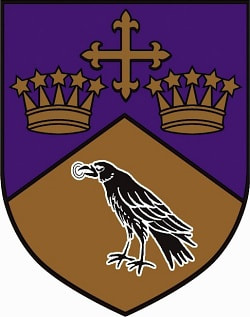
45388 Sapper
Edward Owen
95th Field Company, Royal Engineers
3rd December 1916, aged 29.
Special Memorial 1.
Son of Mrs Owen, of "Hyfryelle", Abbey Rd., Llangollen, Denbighshire.
His headstone bears the inscription "Their Glory Shall Not Be Blotted Out"
The information below supplied by 'The Ellesmerian Club', the alumni organisation for Ellesmere College where Edward was a pupil.
Edward Owen
95th Field Company, Royal Engineers
3rd December 1916, aged 29.
Special Memorial 1.
Son of Mrs Owen, of "Hyfryelle", Abbey Rd., Llangollen, Denbighshire.
His headstone bears the inscription "Their Glory Shall Not Be Blotted Out"
The information below supplied by 'The Ellesmerian Club', the alumni organisation for Ellesmere College where Edward was a pupil.
Edward Owen was born on 29th April 1887, the son of the Reverend Hugh Thomas and Barbara Catherine (née Williams) Owen who lived at Trevor Cottage, Plas Yn Pentre, Trefor, Llangollen. At the time of his birth there were four elder sisters and five elder brothers. A younger brother was born in 1889. His baptism records show he was called ‘Edward Ianion Owen’ but other records have his as ‘Edward Hugh Owen’. His father, continually struggling to keep his family finances solvent, had been incumbent at Trevor since 1865 and was custodian of Valle Crucis Abbey since 1883.
It was in May 1901 that Edward was admitted to Ellesmere College and he was placed in Form Lower II under the charge of Mr. Rees. He played in the inter dormitory cricket competition, representing his dormitory, the ‘Heywood’, without making an impressive mark. He did, however, win the Latin Prize at Prize-giving & Speech Day in the summer of 1902.
Nothing is known about his career after leaving Ellesmere in the summer of 1903. He must have served either an apprenticeship or gone on to further education for his occupation in the 1911 Census is recorded as ‘electrician’ and he was boarding with a Mrs. Ellen Heathcote in Leyland, Lancashire. His father, an acknowledged Welsh antiquary scholar, died in August 1912 and his mother moved to “Hyfryelle”, Abbey Road, Llangollen.
Edward enlisted in August 1915, possibly because of his knowledge of things electrical, and became Sapper Owen, Service No: 45388 in the 95th Company, Royal Engineers. This Company was raised in early autumn 1914 and, due to a shortage of equipment and uniforms, had to undergo improvised training. Until August 1915, when it was moved to France, the Company trained in Ireland as part of the 16th (Irish) Division.
Throughout the war the Company were part of the 7th Division. Edward, consequently, would have been involved in the heavy fighting around Albert, Delville Wood, Pozieres, Guillemont and the operations on the Ancre. He survived these brutal battles but whilst the Company was at Mailly-Maillet (in the Somme region) he was killed on 3rd December 1916.
As his name is on the memorial at the Serre Road Cemetery No 1, it would indicate his body was never found.He was awarded the 1914-1915 Star, the Victory and British War Medals. His mother was awarded a pension of five shillings (25 pence) a week effective from 26th June 1917.
It was in May 1901 that Edward was admitted to Ellesmere College and he was placed in Form Lower II under the charge of Mr. Rees. He played in the inter dormitory cricket competition, representing his dormitory, the ‘Heywood’, without making an impressive mark. He did, however, win the Latin Prize at Prize-giving & Speech Day in the summer of 1902.
Nothing is known about his career after leaving Ellesmere in the summer of 1903. He must have served either an apprenticeship or gone on to further education for his occupation in the 1911 Census is recorded as ‘electrician’ and he was boarding with a Mrs. Ellen Heathcote in Leyland, Lancashire. His father, an acknowledged Welsh antiquary scholar, died in August 1912 and his mother moved to “Hyfryelle”, Abbey Road, Llangollen.
Edward enlisted in August 1915, possibly because of his knowledge of things electrical, and became Sapper Owen, Service No: 45388 in the 95th Company, Royal Engineers. This Company was raised in early autumn 1914 and, due to a shortage of equipment and uniforms, had to undergo improvised training. Until August 1915, when it was moved to France, the Company trained in Ireland as part of the 16th (Irish) Division.
Throughout the war the Company were part of the 7th Division. Edward, consequently, would have been involved in the heavy fighting around Albert, Delville Wood, Pozieres, Guillemont and the operations on the Ancre. He survived these brutal battles but whilst the Company was at Mailly-Maillet (in the Somme region) he was killed on 3rd December 1916.
As his name is on the memorial at the Serre Road Cemetery No 1, it would indicate his body was never found.He was awarded the 1914-1915 Star, the Victory and British War Medals. His mother was awarded a pension of five shillings (25 pence) a week effective from 26th June 1917.

